UPSKILLING

Working with the IPS team has been stellar. They’ve answered hundreds of technical questions and to work with a team that’s so responsive makes my job that much easier.
-Henry Servin SaMoDOT | Santa Monica, CA

Fully
Fully





Working with the IPS team has been stellar. They’ve answered hundreds of technical questions and to work with a team that’s so responsive makes my job that much easier.
-Henry Servin SaMoDOT | Santa Monica, CA

Fully
Fully



Parking’s Secret Weapon in the Talent War
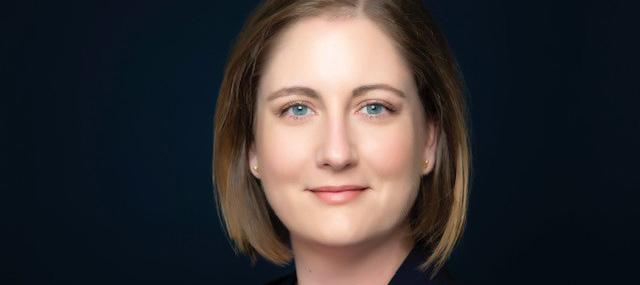 By Kathleen Laney
By Kathleen Laney

 By Andy Santos
By Andy Santos
Today’s Parking and Mobility Professional
By Carmen Donnell, CAPPA story in upskilling, determination, and a drive to succeed
By Adrienne L.M. Tucker, CAPPPreparing the Parking and Mobility Professional for Evolution
By Allen L. Corry, CAPPINNOVATION & TECHNOLOGY Technology, Transportation, and Transformation
By Sarah Ratcliffe By Ashley By Marlene Cramer, CAPP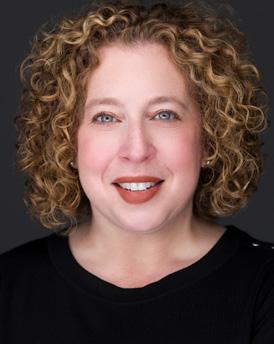
By David Perry
By Roamy Valera, CAPP
PARKING SPOTLIGHT Sierra College Rocklin Campus Parking Structure Watry Design, Inc.
By Mary B. Mabry, CAPP
I LOVE JANUARY. I have always loved the clean slate and fresh start that come with a new year. It’s like waking up the morning after a snowstorm and seeing the perfectly covered lawns that have yet to be corrupted by footprints—for a moment, it is utter perfection.

When deciding on the theme for the January 2023 issue of Parking & Mobility, that feeling of a clean slate and fresh start were the driving factors. After the last few years, our parking community needs that new day. Our organizations need the chance to take all we have learned, the increased resiliency that has been built, and the excitement about the possibilities to come and channel that into success for our organizations, our customers, and our employees.
With that in mind, we are pleased to present our focus on upskilling. What we learned in 2022, and what the great business minds have been saying since business was invented, is that it costs more to replace an employee than it does to keep one. Our world has changed, our industry has changed, yet many of our employees have not kept up with the evolution. Do we leave them behind and replace them? It’s an option. But instead, what if we help our employees to change and grow with the industry? Technology, customer service, emotional intelligence, critical problem solving—all these skills can be honed among our current teams with the right investments in training, mentoring, and development. Will it be easy? No. Will it be worth it? Absolutely.
We have packed this issue with content to start you on your way. Where can you find more resources to upskill your teams? As good witch Glenda told Dorothy in the Wizard of Oz, “You always had the power, my dear, you just had to learn it for yourself.” As IPMI members, you already have a wealth of resources at your fingertips to train your teams and make them your most advanced resource—much of it is free! Reach out to the IPMI staff today if you need more information on how to take advantage of all your membership offers for professional development.
2023 is a clean slate, a fresh start. What will you do with it?
MelissaPUBLISHER
Shawn Conrad, CAE conrad@parking-mobility.org
EDITOR Melissa Rysak, CPSM rysak@parking-mobility.org
TECHNICAL EDITOR

Rachel Yoka, CAPP, LEED AP BD+C yoka@parking-mobility.org
ADVERTISING SALES AND SUBSCRIPTIONS

Tina Altman taltman@parking-mobility.org
PUBLICATION DESIGN
BonoTom Studio info@bonotom.com


For subscription changes, contact Tina Altman, taltman@parking-mobility.org or 888.IPMI.NOW
Parking & Mobility (ISSN 0896-2324 & USPS 001436) is published monthly by the International Parking & Mobility Institute. P.O. Box 3787 Fredericksburg, VA 22402 Phone: 888.IPMI.NOW Fax: 703.566.2267 Email: info@parking-mobility.org Website: parking-mobility.org
Send address changes promptly to: Parking & Mobility or submit online at parking-mobility.org P.O. Box 3787 Fredericksburg, VA 22402
Interactive electronic version of Parking & Mobility for members and subscribers only at parking-mobility. org/magazine
Copyright © International Parking & Mobility Institute, 2023. Statements of fact and opinion expressed in articles contained if Parking & Mobility are the sole responsibility of the authors and do not necessarily represent an official expression of policy or opinion on the part of officers or the members of IPMI. Manuscripts, correspondence, articles, product releases, and all contributed materials are welcomed by Parking & Mobility; however, publication is subject to editing, if deemed necessary to conform to standards of publication.
The subscription rate is included in IPMI annual dues. Subscription rate for non-members of IPMI is $120 per year (U.S. currency) in the U.S., Canada, and Mexico. All other countries, $150. Back issues, $10.
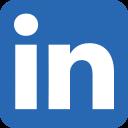
 By Pamela E. Chikhani
By Pamela E. Chikhani
EVERY SINGLE INDUSTRY TODAY is facing this same question. We question daily the business viability, the technology used, and the skill set required to navigate the new tides.
The parking industry is not any different. We are all witnessing the death of brick and mortar and the rise of smart technology, big data, and IoT. The pandemic accelerated this transformation, and the entire world witnessed the importance of technology and its benefits in providing continuity.
Every evolution comes with a new set of skills and a shift in focus. While functional and technical skills take most of the attention, there is now a significant shift of focus toward soft skills, traits that technology alone cannot deliver. While digital literacy, data analysis, and technical fluency are crucial to the survival of parking professionals in the office and on the front lines alike, I believe that the following soft skills will be equally essential to cope with the new paradigm:
● Creativity: Challenges and problem-solving are at the heart of parking management, and standard operating procedures are no longer sufficient to tackle new subject areas like curb management, electric vehicle operation, electric bike and scooter management, mobile app integration, last-mile delivery integration, smart cities support, and integration, to name a few.
● Emotional Intelligence: Empathy, integrity, and working well with others are crucial skills to survive the new workplace in the post-pandemic era. EQ will always keep a clear difference between machines/technology and humans and will be the center of the vital requirement for any human-delivered role in the parking industry. This transitions us to the next crucial skill in our industry: customer service
● Customer Service: Being customer-centric and resolving conflicts requires high emotional intelligence. Those two skills go hand-in-hand for our frontliners, with the ever-complicated evolution of parking technology and integration with other essential services becoming a part of visitors’ journey and experience.
● Lifelong learning attitude and growth mindset: Learning new skills is essential to remain relevant and add value to your domain. Having an open mind and accepting and adapting to change requires a continuous investment in one›s knowledge and skills. We have come a long way from when parking was mere facility management placed in a terrible section of every business leader’s P&L to becoming as sophisticated and attractive as the most advanced financial instruments. ◆
PAMELA E. CHIKHANI is General Manager, Secure Parking – UAE & Qatar, and a member of the IPMI Board of Directors. She can be reached at pamela@ secureparkinguae.ae

 By Allen L. Corry, CAPP
By Allen L. Corry, CAPP
PARKING AND TRANSPORTATION PROFESSIONALS historically do not like change, and don’t always feel comfortable doing things differently from the way they always have. One of the key benefits of change in a workplace is the opportunity to convince these professionals that evolution can make their job easier, especially with new technology and innovations. We need to excite our teams and focus them on the technology evolution, and how it will streamline and transform the way we do business.
The focus on technology gives us key insights into the most relevant drivers for change. Mobility innovations—connected apps, frictionless technologies like blue tooth low energy (BLE), license plate recognition (LPR), and online sales channels from multiple solution providers—challenge even the most experiences operator/owners. With decades of expertise and an emphasis on technology, we as professionals guide our customers into the future of parking. Parking technology, operations, and transportation are evolving at speeds never seen in the industry.
The Transportation Business Unit (TBU) at the Dallas Fort Worth International Airport has implemented a business strategy and continues to be the largest source of non-aviation revenue for the airport. It maintains cost competitive operations and financial strength striving for exceptional customer and team member experience through leadership, engagement, innovation, technology, and analytics.

We build the relationships to leverage and develop the technology by focusing on the fact that it’s all about the employees and customers. By engaging and developing employees and better caring for customers, we yield employee engagement, customer-centricity, and accountability that stems from a personal-professional integrity in all that we do. The strategic plan ensures the employees are engaged to drive a strong customer service and teamwork through the innovation and technology alignment and building a culture of trust.
Providing and encouraging professional development is critical in the upskilling of the parking employee, setting the team up for success. This ensures they have the tools, training, and knowledge to get the job done. We as leaders must explain how this new innovative space we are entering will give them empowerment and confidence to take ownership when making decisions. We must evolve to adapt to align with the concept of a seamless customer journey, and to actively identify and mitigate challenges when encountered.
It is stated that in the next decade artificial intelligence (AI) is predicted to impact nearly 60% of all jobs. While most jobs are unlikely to disappear entirely, the nature of work will change dramatically as AI assumes routine activities leaving employees to handle tasks with the highest requirements for social and creative intelligence. We need to get smarter by learning the critical skills and the right process for generating more revenues.
Our leaders will need to look beyond the technology and focus on transparency and trust-building while developing a learning organization to ensure the right skills are in place to enable employees to adapt to change and support the successful implementation of technology. ◆
CHANGE IS INEVITABLE, so the saying goes. With change, it’s natural to expect uncertainty. Change can impact roads, public spaces, infrastructure, and government functions at the local municipality level.
are made. If there is a sense of job insecurity, being left behind, or being unable to learn, change can instill fear; it can have repercussions on any learning that needs to take place during the transformation process, and that can also disrupt the systems in place. We could spend much time debating how the change initially occurs. Instead, let’s look at a few ways to make technology advancements in your municipality more intentional, less invasive, and even a pleasant experience for those impacted by it.
Using technology to transform parking, transportation, and mobility can be one of the most significant instances of change in local governments. To build rates and zones, manage revenues, deliver permits, and develop enforcement programs requires many employees and stakeholders across a municipality. These solutions become the backbone of systems on which budgets and residents depend.
While the pandemic created parking and transportation challenges, the unpredictable return of commuters and travelers in 2022 has been an equal challenge ultimately requiring local governments to seek solutions that can offer flexibility at the curb. Implementing new and progressive ways of managing the curb are more prevalent than ever, but one thing is the same; the change that is required to adopt those solutions.
Change can be a source of significant anxiety among staff and if not acknowledged and managed, can have a negative impact on productivity long after changes

First, pick a technology that will sustain change and adapt to the progress of your municipality: When we think about the change that will impact municipalities during the next ten years, the idea of replacing the software that operates a parking, enforcement, or mobility department to accommodate those changes at the pace they will happen simply doesn’t make sense. Besides, it has already begun. With the increasing number of scooters and bikes in cities, rising emissions tolls, and more dynamic curb use for Transportation Network Companies (TNC) and commercial fleets, the pace of change has picked up. Many of the fixed-point solutions in this space are not prepared to manage the combination of paying, parking, ticketing or permitting that needs to happen to manage the curb effectively.
Next, change will require revenue and opportunity costs during the implementation. There are many ways to mitigate this cost, bringing us back to the type
of technology you are implementing. Flexible platform technology built with a services-first focus can drive a smooth transition by allowing integrations that create a bridge from one technology to another.
For example, software that makes its products and data offerings available to other entities via public APIs to integrate, build on and respond to in real-time. Combining the ability to process payments seamlessly across multiple providers with the sophistication of the platform’s rate engine allows cities to change rates across all their payment providers easily. Centralizing all parking, enforcement, permit, payment, and other mobility data to one platform helps increase revenue, is convenient for customers, and supports equity.
Suppose you’ve been part of a hard cut-off for a solution transition, especially in a municipality. In that case, you know the extreme revenue hit, adoption curve, and financial challenges that can impose. Your technology provider should include a transition timeline that allows–even with the bureaucratic challenges of procurement–an effective solution to limit the disruption to people, processes, and payments that are critical to your fiscal financial plans.
Third, cities should consider people when implementing technology change. The cost of switching technology is high— it’s not just the fatigue on employees; it also includes the user fatigue that can impact adoption and compliance as most of these solutions extend to residents. There are a few things you can do to limit and mitigate that effort:
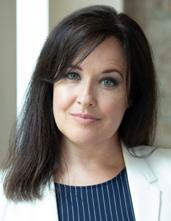
1. Clear communication of the value.
2. Open dialogue and forums for complaints, concerns, and discussion.
3. Set clear and specific goals and expectations.
4. Make it fun, community-focused, and clear.
5. Communicate 4-5 different ways.
6. Assure change takes time and establish plenty of postchange forums for continued learning.
7. Don’t train too early.
8. Use iterative and hands-on learning, do not execute formal binders of procedures unless necessary or leave long periods between formal training and use.
9. Prioritize people over revenue.
Finally, let’s reimagine the procurement process based on outcomes and not requirements. We often hear that to commit to making a change, the pain of change must be less than the pain of the status quo. In government technology change, however, that isn’t always the case. Government technology procurement through antiquated RFP processes can have an outcome of “change for the sake of change” rather than progressing solutions forward and making a positive impact. While many cities are trying new techniques to procure, there are many instances where RFP processes can result in unintended consequences. For example, if you conduct a feature and requirements-heavy RFP process, recognize that the technology you request today may be outdated and full of constraints by the time you implement your solution. Municipalities desire innovation, yet RFPs can create a barrier to entry that eliminates players. Without flexible evaluation, a procurement could solve for one narrow fixed solution when a platform offering can solve problems across multiple departments more quickly.
A well-known quote from Bill Gates says, “We often overestimate the change that takes place in two years but underestimate the change that can take place in ten.” This is true in the mobility space now more than ever as technology applied to machinery, including vehicles and infrastructure, means acceleration of mobility as a service, micro-mobility, micro-delivery, and autonomy.
The good news is that software as a service (SaaS) has enabled an important reduction in change fatigue: software solutions with solid platform-based foundations will endure the test of time. Today’s software products procured by municipalities must be flexible, iterative, and agile enough to adapt to new business needs. Platforms can offer significant ease of scaling, changing, and enduring policy change in a city by making business rules easy to change in one place and share with any integration. ◆
SARAH RATCLIFFE is Senior Vice President of Product Management at Passport. She can be reached at sarah.ratcliffe@passportinc.comWhile the pandemic created parking and transportation challenges, the unpredictable return of commuters and travelers in 2022 has been an equal challenge ultimately requiring local governments to seek solutions that can offer flexibility at the curb.
MOST TECH-SAVVY PROFESSIONALS who attend professional networking events are clueless about how to network. Many have no objective or plan on how to capitalize on the opportunities that may exist in the room. Oftentimes they leave such events frustrated and convinced that networking doesn’t work.
To change that, here are five basic rules to make it easier for you to get something from your networking opportunities.

Rule 1: Most of the people in the room are not people you want or need to contact again. In any public meeting, odds are that most people there cannot or will not be good partners for your networking. They either don’t know the kind of people you want to meet, lack the potency you need to meet them favorably, or they aren’t willing to connect you to their contacts. You don’t want to keep trying to network with people who cannot or will not help you. But here’s the good news: you don’t need or want to connect with everyone, just the ones who are suitable to work with you. And they won’t ever be the majority of any room of strangers.
Rule 2: Seek to give rather than get. People who are seeking to get something from others are quickly seen as the thoughtless, emotional leeches we all know they are! Don’t be one. Take the posture that you’re seeking to see if you can help the other person gain introductions to the kind of people they want to meet. You’ll blow away the people you meet who won’t know what to make of you, but they’ll love you for it!
Rule 3: Seek out people who can help you and vice versa; anything less is unacceptable. While you’ll posture yourself as seeking to give first and then get in return, you must be sure you will be able to get referrals from the other person, or you’ll end up with nothing to show for all your hard networking work. Don’t forget—you are seeking people who are calling on the very same kind of people you are (but, in a non-competitive capacity).
Rule 4: Seek to DIS-qualify rather than qualify. This is what has given more people the nerve to meet strangers than anything else. Make it your mission to meet people with a presumption that they are not qualified for you to invest any further time, energy or money trying to get to know better. See—isn’t that a relief! As you now know, unless you can help someone and they can help you, you’re wasting someone’s time—most likely yours. Don’t do that to yourself—or anyone else!
Rule 5: Have an objective and a plan to achieve it—What should be your objective when you are networking in a room full of strangers, and what is the plan to achieve it?
First, your objectives. I’m going to suggest three to keep it simple:
1. Move through the room as quickly as possible. In any large room there’s a good chance you won’t meet everyone. There’s also a good chance you’ll find a lot of people who will take more of your time than you need to give them. So, keep on moving
2. Identify potential networking partners, not prospects. Again, you’ll need to know how to spot these people from the crowd. It’s relatively easy if you know how to ask questions of the people you meet at an event (see below!)
3. Follow-up with the people you want to add to your network Long, in-depth one-on-one conversations will not work in networking situations, so don’t do it. Instead, get their information and set a time and place to meet again where you can really sell yourself to one another.
How do you accomplish this? Arm yourself with questions you’ll plan to use to achieve your objectives! Here they are:
● OPENERS: These are questions that help you to break the ice. If you’re shy about approaching strangers, know that most other people feel just as you do. So, take the initiative and ask questions to start a conversation. You’ll be pleasantly surprised at how easily you’ll be in the middle of conversation with a stranger!
● QUALIFIERS: These are THE questions you’ll use to reach your objectives.
1. Organization: You want to know where they’re working and what they’re doing. If their company is one that has several good clients who may be prospects for you, that’s important for you to know. It suggests someone worthy of more time on your part!
2. Job Position: You want to know if you’re talking with a principal player or a second stringer. If it’s the player, that’s good. If not, you may want to use an “ender” quickly.
3. Length of time with their organization: If they say they haven’t been in the organization all that long, ask them where they were before joining this organization. In their prior capacity, they may have an extensive network of contacts that you might find very attractive.
4. Ideal Prospect: This is the key issue, isn’t it? Unless you’re talking with someone you can help, all efforts will be for naught. After suggesting that you might know some people they should be meeting, you should be in a good position to know that they can probably reciprocate with you.
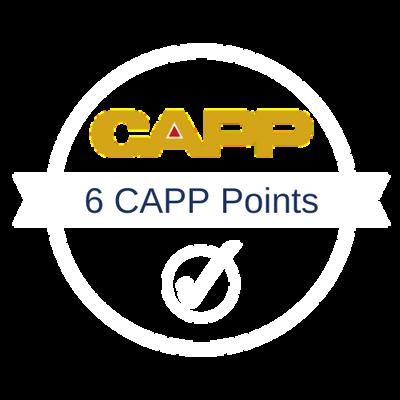
● ENDERS: Self-explanatory. You need an exit strategy—these are your tactics to get free. Use them!
Bottomline: networking is not that difficult to do, if you have a clear set of objectives and a plan to reach them. ◆ ASHLEY OWENS is a Networking Concierge at Ashley Assists, LLC. She can be reached at ashley@ ashleyassists.com


 By Marlene Cramer, CAPP
By Marlene Cramer, CAPP
ILOVE A CHALLENGE AND LEARNING NEW THINGS. I was recently given a unique professional development opportunity to attain my LEED® Green Associate™ certification. As a parking and mobility professional, it is necessary to keep up with your professional development and specialty knowledge. Specifically, knowledge related to green building makes parking and mobility function efficiently and sustainably.
Sustainable practices are not new to the parking and mobility industry. Over the past few decades, sustainable construction emerged to limit the impacts of the built environment. Almost a decade ago, IPMI partnered with the U.S. Green Building Council (USGBC) to establish Parksmart certification parking garages. Parksmart is the world’s only rating system designed to advance sustainable mobility through smarter parking structure design and operation. This rating system complements and supports building projects pursing LEED certification, the standard for defining a green building and encouraging sustainable practices design and development by means of tools and criteria for performance measurement. The LEED building rating system encourages environmental commitment to all stakeholders and LEED certified projects achieve the Triple Bottom Line (TBL) with the evaluation of the building impacts on People, Planet and Profit. IPMI, in partnership with the USGBC, awards Parksmart certifications to parking facilities with sustainable building and operational practices that meet the rigorous requirements of Parksmart.
In my role as director of transportation and parking services on a university campus, I work closely with our facilities development, management, and planning department. This department is comprised of campus architects, planners, and project managers working on a multitude of building and construction projects. I feel very privileged to have a partnership with this group, as it provides the opportunity to work in coordination through a holistic integrative approach to make environmentally responsible decisions, one of the many principles of green building.
Cal Poly’s campus master plan includes a lot of building over the coming decades. It strategically plans to implement
more green building practices on campus to reach campus sustainability goals. These sustainable goals have a direct impact on the future of parking and mobility on campus and the surrounding community. Historically, conventional building site selection did not pay attention to the accessibility to mass transit, shared parking, and mobility services. Sustainable practices connect the opportunities to develop buildings near mass transit and encourage more efficient means of transportation. The goal is to build sustainably while reducing vehicle trips and promoting sustainable alternatives. Regularly, much to the dismay of students, faculty, and staff, I refer to our campus master plan as a reminder that our campus sustainability goals do not include building more parking.
As we have been implementing our campus master plan, a key operational gap was identified. The gap was that the campus had very few LEED accredited professionals. A decision was made that as an integral part of reaching our campus sustainability goals, educating the staff involved in campus building projects on LEED practices was necessary. Professionals from every sector should be well educated and equipped to the “know how” to face these future building challenges, and this is exactly what makes LEED certification important and worthy. This would give those of us involved in decisions related to future building and construction the opportunity to expand our knowledge of LEED practices and the opportunity to test for LEED Green Associate certification.
The campus hired a LEED expert, vetted by the USGBC, to educate a group of staff members on green building and practices as it pertains to the LEED rating system. The LEED Green Associate training was broken down into the following topics: Sustainability in the 21st Century; Introduction to LEED;
and review of the seven categories in LEED certification. These topic sections reviewed traditional vs. sustainable practices and its relation to the triple bottom line. The initial class was an eight (8) hour class. However, preparation for the certification test took several months. My classmates and I met regularly over a period of four months reviewing content, practice tests, YouTube videos, and a multitude of study prep resources. We memorized key ASHRAE (American Society of Heating, Refrigeration and Air-Conditioning Engineers) performance numbers, definitions, environmental statistics, LEED credits, and credit relationships. I unfortunately suffer from test anxiety and so I personally spent many extra hours preparing and studying for the exam. I was more nervous for this exam than the CAPP exam, as most of the subject matter for this credential was not all the subject content was directly applicable to my day-to-day role and responsibilities.
Test day finally came, and I successfully passed! Prior to this endeavor, Cal Poly had only two LEED accredited professionals on campus, now it has 15. For Cal Poly, the investment in the LEED Green Associate certification was a great investment in the future success of our campus green building goals.

I can’t stress enough how important expanding your knowledge and understanding of a more sustainable future is in our roles as parking and mobility professionals. The ability to apply strategies and best practices that are environmentally responsible and resource efficient to the built environment will help us make a lasting impact on the parking and mobility systems that future generations can enjoy and benefit from. If given the opportunity, the LEED Green Associate certification is a very worthwhile credential to pursue. ◆
MARLENE CRAMER, CAPP , LEED Green


Associate is the Director, Transportation & Parking Services for California Polytechnic State University, and a member of the IPMI Board of Directors. She can be reached at mcramer@calpoly.edu

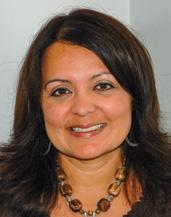
WELCOME TO 2023! What a year 2022 was. We survived the “Great Resignation,” quiet quitting, layoffs, and the increasing costs of labor. Goodbye 2022!
The year brings about changes across the work landscape and within our budgets. As we look toward 2023, we need to look at our workforce and determine how to retain current employees, and how to bring new employees into the organization. Wages, benefits, retirement plans, and other compensation will always be at the forefront of current employees’ and prospective employees’ minds. What can we do as HR professionals or business leaders to address this? Each of these considerations have a cost that impacts the bottom line. However, continuing the recruitment carousel impacts the bottom line as well as customer satisfaction just as much. So, the question we must ask ourselves in the parking industry: “How do we do more with what we have?” The answer is upskilling
What is upskilling and why does it matter? Great question, and I am thrilled you asked! Upskilling is a trend that can be used to provide training and development opportunities to your existing staff. Fortunately, I already know your next thought: how much is this going to cost us? As seasoned human resources professional, I will tell you—it depends. Before you talk about upskilling, the leadership team needs to take a hard look at what makes sense for the organization. Where are the skill or labor gaps? Is the organization local, or does it have multiple locations throughout the country? Once those and a host of other questions are answered, you can move on to what upskilling looks like for your organization.
Upskilling can be done in a virtual or in-person settings. In many cases, it doesn’t have to cost you—the leader—more than your time. A great way to upskill your top performers is to put a mentoring/development program into place. Be sure to make this a formal process. This will show the employee you are investing in them, and in turn, the employee will be invested into the organization. This investment is an investment in time to teach a future leader how to prepare for the next role.
Another upskilling option that can be done virtually or inperson would be hosting Lunch & Learns. Lunch & Learns—also known as “brown bags”—are short, training-focused programs that take place over your attendees’ lunch break. You might host

a Lunch & Learn to introduce a new concept or strategy, or to discuss a key topic like diversity or wellbeing. These programs may not need to be as formal as the mentoring/development program but can be beneficial. Your high performers not only gain knowledge, but they also present and share their knowledge on several topics. This creates synergy and allows staff to draw on different experiences while sharing knowledge.
One other option is a Learning Management System or LMS. These are organization-specific, curated programs that have been developed by companies with large employee populations spread throughout a large geographical area. These can be very useful for self-directed upskilling opportunities. Think of these like the “Master Classes” of your organization. These types of programs can house a wide range of learning opportunities such as new Excel spreadsheet tricks or teaching new supervisors or leaders to interpret your business units’ P&L or daily revenue reports. The caveat is to make sure content is updated regularly.
As we look through finalized budgets for 2023 along with the number of positions open, assuming most of them are hourly positions, remember the cost of that new hire. According to SHRM (Society for Human Resource Management) the average cost of new hires is $4,700. However, often that number should be inflated to three to four times the actual salary of that position. Katie Navarra goes into detail in The Real Costs of Recruitment on Society for Human Resource Management (SHRM) website. It has become more important than ever for employers to find ways to keep high performing talent engaged on a personal and professional path to success. It’s a win-win.
As we continue forward into 2023 with the possibility of a recession, it will be vitally important to find ways to upskill current staff. Remember it’s not doing more with less; it’s about doing more with the resources we have in place. ◆

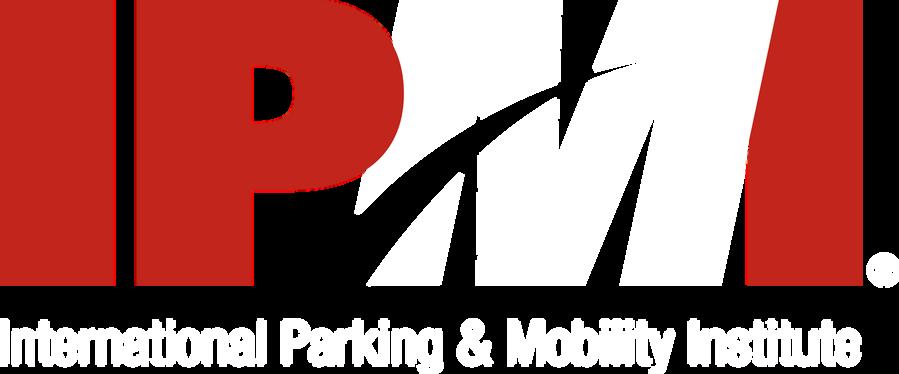
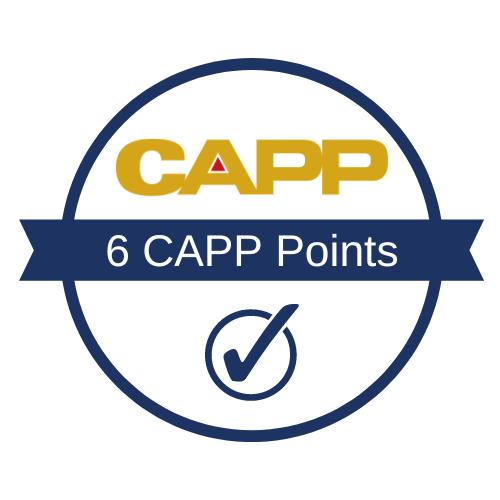



 By Roamy Valera, CAPP
By Roamy Valera, CAPP
WE’VE ALL HAD MANY “FIRST” TIME EVENTS. As a child I had my share, but there is one I vividly recall. It was my first day of school after arriving in this country and I joined my fellow sixth graders. This particular “first” was somewhat traumatic because of the combination of the language barrier, as well as my adjustment to a new country and culture. A recent change in my professional career reminded me of the anxiety one can feel when facing a “first.” A new job and a new team can be daunting for anyone. It can generate the kind of anticipation that keeps you awake at night.
We have expectations that can run high. We question how we will be welcomed and accepted, and how our management/working style will fit into an existing culture. It had been four years since the last time I started a new job and joined a new team. The experience brought back similar feelings and anticipation not unlike my first day of school so many years ago. I found myself drawing from previous experiences on how to connect and become a contributor in this new role.
Of course, first impressions are critical to making a connection with others. I focused on my first meeting, call, in-person interaction, etc. All this preparation was because I remembered another first day and first meeting in years past when a new direct report asked me in disbelief if she now “worked for me.” I was hoping there would be no similar insecurities of how I would assume my role, but rather I would make my own contributions to the success of the organization.
My personal philosophy is that you “lead from the front.” This term best describes leaders that get involved at all levels and engage in the everyday management of the organization. I’ve had the great fortune to have worked with several very successful and influential leaders in my professional career. One commonality is how each of them interacted at the different levels of the enterprise. If I was to draw a correlation between the ones I’d most
like to emulate, it’s that they all participated in and performed activities not common for someone in their role. In comparison, the less effective leaders led by the title printed on their business cards, which was always prominently displayed.

I strongly believe leadership is intentional. I am excited to work for a tech start-up and with a small team. This means we all wear many hats. Our days fluctuate from strategic to tactical, and that is what is needed. Our calendars are filled with many tasks, and none is more important than the collaboration with each other for the benefit of the growth and success of our organization.
Leading from the front will inspire others in the organization to do the same for many reasons:
1. It provides the opportunity to coach and mentor in place.
2. You are actively engaged in daily activities to move the organization forward.













3. You become an effective coach when along with your team you execute a strategy or plan which generates the expected results.
4. You can be a cheerleader and supporter during difficult tasks required to accomplish a desired success.






5. You are seen as a direct contributor and not a boardroom suit/executive.

Author John C. Maxwell shared, “Leadership is not about titles, positions, or flowcharts. It is about one life influencing another.” When we influence, we can change the course and the outcome. Maxwell also said, “leaders must be close enough to relate to others, but far enough to motivate them.” And this is the difference between knowing how to navigate between your strategic and tactical self. My hope for one of my legacies is that my coaching, mentorship, and leadership will have impacted those around me and that in a small way I was able to shape their future for the better.
Every day I am inspired by those around me “leading from the front.” I am encouraged by those selfless and title-less doers who sacrifice their day
to make others around them better. I will continue to focus on how I can lead from a position of action and inspire those around me to become a better version of themselves while leaving behind their own legacy. Let us all focus on the power of relationships, transparency, and trust, while striving to also become a better version of ourselves.
May your impact on others be a result of where you stand day to day while you lead your team and organization. ◆
ROAMY VALERA, CAPP is President of Automotus. He can be reached at roamy@ automotus.co



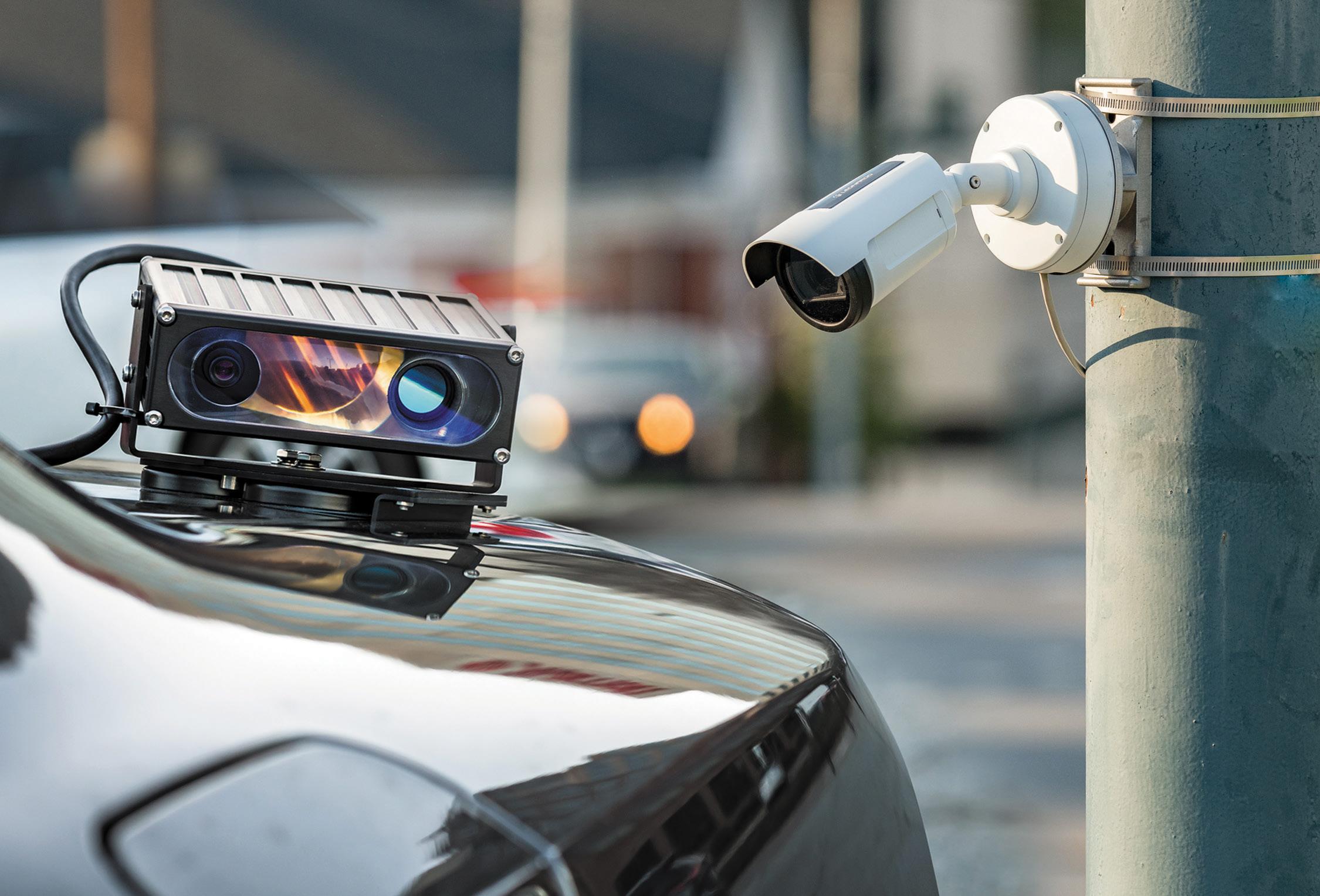
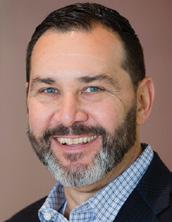
WHEN SIERRA COLLEGE began implementing their new Facilities Master Plan, structured parking was the crucial first piece to support development of new science, public safety and student services buildings planned for the Rocklin Campus.
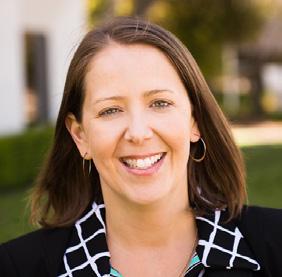

The resulting 488,000 square foot Sierra College Parking Structure provides 1,500 parking stalls on five levels, with convenient pedestrian connections to both the existing campus and future expansion.
To allow for natural ventilation while providing aesthetic appeal, the design team utilized perforated, replaceable banners to provide color and architectural interest. This has the added benefit of creating a façade that serves as a creative canvas. Custom banners can be changed to celebrate events, seasons, and welcome visitors to the campus.
Vertical fins create contrast with the concrete finish, and the elevator panels are clad with fiber cement wood panels. A lit metal signboard
FIRM: Watry Design, Inc. — Architect, Structural Engineer, and Parking Planner

LOCATION: Rocklin, CA
OWNER: Sierra Community College District
PROJECT TEAM MEMBERS: General Contractor: McCarthy Building Companies
STAFF: Gordon Knowles, Associate Principal, gknowles@watrydesign.com; Anita Gupta, SE, Associate Principal, agupta@watrydesign.com
spanning all five levels spells out the college’s name and serves as a wayfinding device.
Sustainable elements of the structure include 20 EV charging stalls, with provisions for an additional 67 in the future. Structural loads and columns were designed to accommodate future photovoltaic panels on the roof, and electrical rooms are sized to handle future panels and equipment.
In addition to serving the campus, the parking structure also reduces traffic and congestion along Rocklin Road. Before construction of the structure, most of the 4,300 parking existing stalls were located on the south end of campus, resulting in students exiting Interstate 80 onto Rocklin Road, a residential area. The new structure’s location encourages students to use Sierra College Boulevard instead, while providing convenient access to both existing buildings and the planned expansion.


The natural contours of the site also provided an opportunity to reduce the structure’s impact on the surrounding buildings, mitigating its large size. Utilizing Building Information Modeling (BIM), the project team was able to create a 3D map of the structure’s massing and place it in context with the surrounding campus. This 3D model provided a better understanding of the parking structure’s size and scale. Upon seeing how the original concept would impact existing and future facilities, the design team proposed changes that reduced the structure’s overall
footprint and blended the structure more effectively into its surroundings, saving the College approximately $4 million in construction costs.
Replacement of six tennis courts was a key part of the project and integral to construction phasing. As students needed the courts for competition during the athletic season, a certain number of courts needed to be operational during construction. The design team worked closely with the college to ensure there would be no disruption to the athletic program.◆
“The new parking garage is huge for residents who live along Rocklin Road. I am appreciative that Sierra College is once again being a great partner by working with the city to alleviate traffic concerns of residents.”
—Mayor Joe Patterson
 by Mary B. Mabry, CAPP
by Mary B. Mabry, CAPP
SINCE 1987, the Texas Parking & Transportation Association (TPTA) has been inspiring, educating, and leading Texas parking and transportation professionals. It is a vehicle for individuals engaged with the parking and transportation businesses in municipalities, hospitals, airports, universities, and parking authorities. We promote the mutual interests of the membership in the provision and operation of adequate, safe, efficient, convenient, and economical public parking and transportation as a proper and necessary function for the economic and social well-being of our members.
TPTA’s vision: parking. mobility. connected. TPTA continues to build on key priorities and objectives that were established in 2019. We continue to enhance our association and our membership benefits by increasing our educational opportunities. Recently, have pushed towards increasing our marketing and social media presence for our community. The addition of Dawn Marti as our Conference, and Events Coordinator, Megan Leinart’s expertise in marketing, and our newest board member, Melonie Curry, have all helped us focus on social networking. Many organizations in our industry are not aware of our association benefits or the abundance of resources available to them, especially small cities and hospitals, so we are using social media to expand our current network of professionals who would appreciate all the knowledge and expertise we have to offer.
The 2022 TPTA Conference and Tradeshow was held at the Grand Hyatt Hotel in San Antonio, Texas. We were apprehensive about the attendee numbers, but we were pleased to see 200 attendees versus the 140 that attended the first post-pandemic conference in 2021. Although it did not meet our pre-pandemic numbers, we were excited to see universities coming back as 14 Texas universities attended—numbers we had not seen since prepandemic times.
Some of the highlights of the event included:
● A silent auction that raised about $3,000 for the local chapter of the Roy Maas Youth Alternatives (RMYA). Many of our vendors and members donated spectacular baskets filled with goodies and most baskets netted $200 to $350 each.
● Our Monte-Carlo Casino Night event with red carpet entry flanked by paparazzi caught attendees by surprise but everyone was quick to “strike a pose” for the cameras. The event took
place on the roof of the Grand Hyatt and the weather could not have been nicer with a cool breeze and a delicious array of tasty food and drinks, dancing, and a photo booth. Even Dave Onorato, CAPP (IPMI Past Chairman) was impressed with his first TPTA show, stating he would love to come back for 2023.
● The networking and educational sessions, as always, were a big draw with topics from Self-Driving Shuttle Pilot Program, Digital Marketing, ROI of Being Proactive through Real-Time Statistical Data, Parking Action Plans in Texas, Employee Engagement and Job Satisfaction, and How Customer Experience Drives Operation Efficiency and Effectiveness. As always, we are grateful for our expert presenters, sponsors, and vendors for their generosity and support of our association and conferences. Without their sponsorship and patronage, we could not provide the beneficial assistance that we have offered over the years.
We thank all our members for their support of the 2022 Conference and Tradeshow. As we missed many of you, we hope to see you soon at our April 2023 Conference and Tradeshow in Dallas/Plano, Texas.
● Distinguished Service Award: Dennis Delaney, Assistant Director of Parking & Transportation Services, The University of Texas at Austin
● Employee of the Year: Allen DeForde, Parking, and Transportation Services Assistant Director
● Parking Structure - New: Sam Houston State University Coliseum Parking Garage, Walter P Moore
● Parking Program: Self-Driving Shuttle Program, The University of Texas at Arlington
● Parking Equipment and Technology: Children’s Health Dallas, NextGen Parking
A special thanks to the SWPTA board members for judging our award entries for 2022. The details and submission information for the 2023 awards program is available on our awards pre-qualification page. Submissions must be received no later than February 28, 2023.
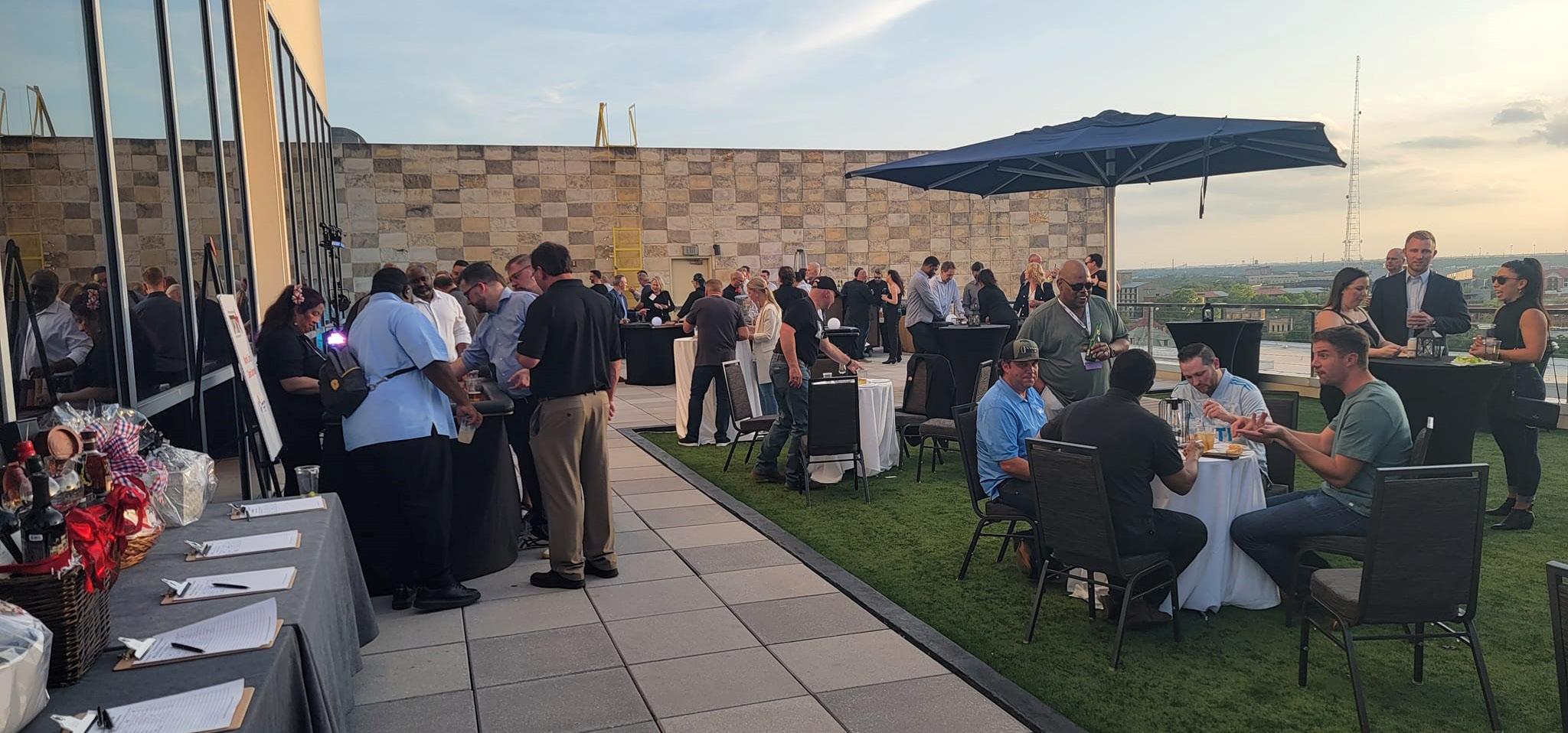
Our first face-to-face Roundtables and Networking Session was held on September 27, 2022, at the DFW Airport Department of Public Safety Headquarters. We had a great time at the kick-off networking event at the Thirsty Lion, and more than 50 were in attendance for the roundtable that included three educational sessions covering hiring, retention, and building team morale, analytics, and autonomous shuttle pilots. Our Board Member and Chair, Jaime Snyder, CAPP, is already hard at work on the next in-person Roundtable and Networking session in February 2023. Check our website for more information at www.texasparking.org.
This year TPTA joined up for The Intersection Reception at the Campus Parking and Transportation (CPTA) Association that was held at the Texas A & M Hotel and Conference Center. The reception was held in October, with more than 60 attendees. It was a great networking event, and some who attended did not have a local association and are now considering TPTA as an additional new resource. We would like to thank CPTA and Matt Penney for this initiative and approval of this successful event.
2023 Upcoming TPTA Conference and Tradeshow: Hilton-Dallas/Granite Park, Plano, Texas, April 10-13, 2023. You still have time to register to attend one of the bestattended state association shows in the US, just click here: http://www.texasparking.org/ conferences.
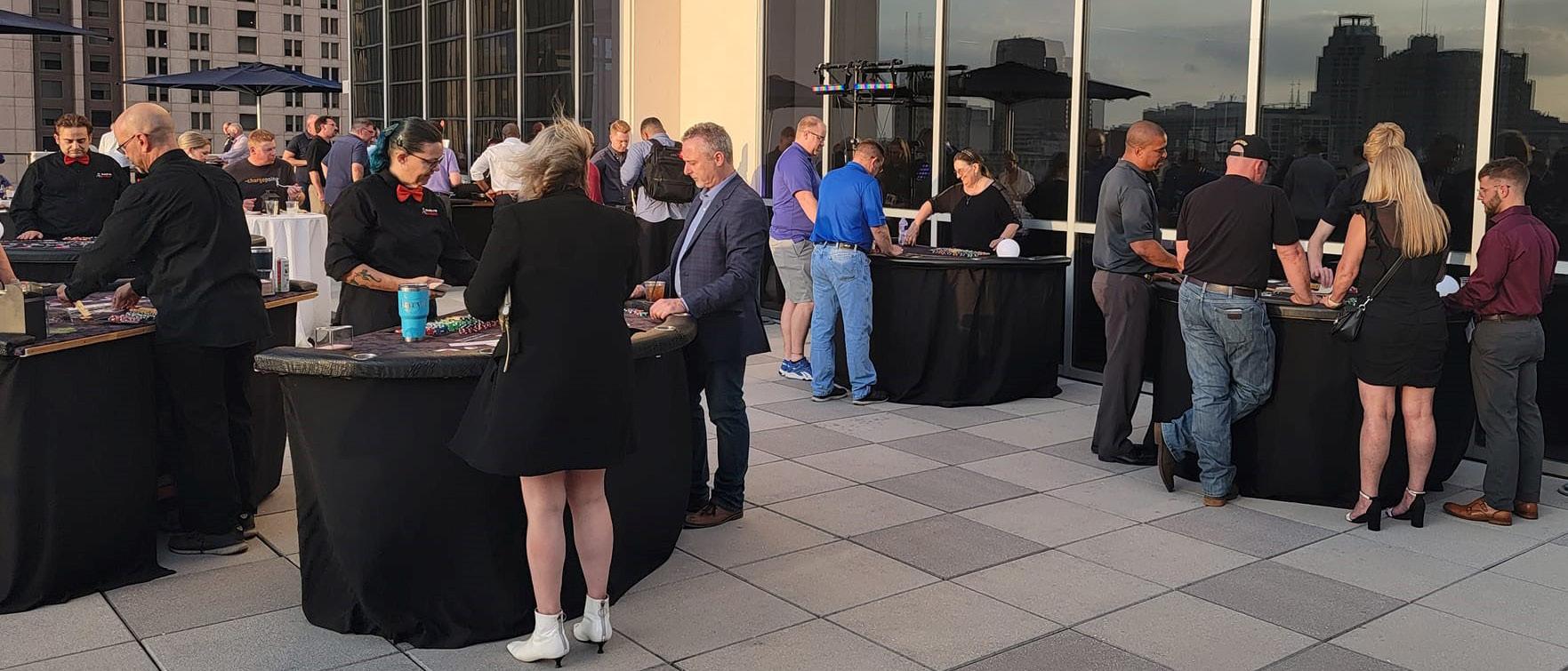
More events will be planned throughout the year so be sure to check out our website at www.texasparking.com, for questions send them to TPTA@texasparking.org ◆
MARY B. MABRY, CAPP , is Product Manager/Client Advocate-Parking Solutions for Cardinal Tracking, Inc. She can be reached at mmabry@ cardinaltracking.com

PRESIDENT Mary B. Mabry, CAPP
Product Manager/Client AdvocateParking Solutions, Cardinal Tracking, Inc.
Dennis Delaney, CAPP
Assistant Director of Operations for Parking & Transportation Services, University of Texas at Austin
Nicole Chinea, CAPP
Senior Project Manager, WGI
Bill Herrel
Sr. Account Executive, Associated Time and Parking Controls
DIRECTORS:
Dean Ahmad
Assistant Vice President, DFW International Airport
Melonie Curry
Communications Manager, ParkHouston-City of Houston
Adam Kaufman
Assistant Director of Parking & Transportation, University of Texas at Arlington
Peter Lange
Associate Vice President of Transportation Services, Texas A&M University
Jaime Snyder, CAPP
Senior Parking Consultant, Walter P Moore
Matt Penney, CAPP
Director of Parking & Transportation Services, Baylor University
Paul Stresow
Director, International Bridges Department, City of El Paso
MANAGER
Dawn Marti

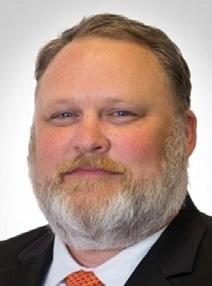

Big Data has become the future of the parking industry. I believe it will be imperative for frontline parking and mobility professionals to understand how to operationalize big data to make different decisions, from staffing to setting rates. The amount of data collected by parking organizations is an invaluable tool that, if used correctly, may provide the insights necessary to remain competitive in a constantly evolving market. This is especially pertinent in the parking and mobility world, where new technologies are emerging daily, streamlining parking and transportation services for the end users.”
Nancy Kobielski Business Operations Manager, Parking & Transportation Services Division of Finance and Administration, University at Buffalo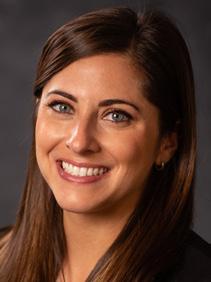
Improved soft skills will be an attribute our parking and mobility professionals will need to be successful in the years to come. The lack of personal interactions and the increase of more automated features may have inhibited how we interact with our colleagues and customers creating a divide. A conscience effort to work on these skills by participating in trainings, volunteering, and building positive relationships in and out of the workplace will contribute to fine tuning the people skills we need to interact with our fellow humans.”
Long CEOData Science is becoming increasingly more important to every industry, especially one as niche as parking and mobility. Knowing where to find, understand, extrapolate and how to implement change based on data collected from various sources is essential. These sources can include current or new on-site equipment and technologies, employee feedback, polling, industry resources, and third-party research data. Predicting and understanding trends, client preferences, pricing, efficiencies, and modeling for maintenance and capital expenditures is how you can lead your team to success and profitability.”
Joseph Madison Associate Director of Parking Operations Kennesaw State UniversityUnderstanding technology will be Qi (pronounced KEY) for frontline parking and mobility professionals. In the next decade, we will see the larger adaptation of smaller form technologies that will be largely battery dependent. From buses that charge wirelessly to our mobile devices, we should plan to incorporate currently available wireless charging technology standards as they emerge.”
MichaelWhat new or updated skills and proficiencies will frontline parking and mobility professionals need for success in the decade to come?


Parking Services Manager
City of Greenville, SC
Focus on communications skills, as these skills are the greatest asset as you need to effectively communicate with managers, team members and employees. From customer service to providing employee feedback, effective communication skills enable you to get the message expressed in a clear and concise manner. The best laid plans rarely find success without strong communication skills.”
David Stein Director—Parking Planning and Policy New York City Department of Transportation
The days of traditional parking studies are over. The need for professionals to understand the interplay between different uses and users is critical to future success, as is the use of new technologies and approaches such as expanded analytical al platforms, AI, and the ability in multi-disciplinary environments.”
While the pandemic is mostly behind us, the digitization of human communication and interactions has stunted the growth of emotional intelligence in our entry-level employment pool. The parking and mobility industry is a “passionate” sector, and we need to ensure that our frontline staff are prepared for the high emotional interactions that are prevalent in our industry.”

Mobility Services Manager (Parking, Transit & Fleet)
Public Works Department Town of Estes Park, CO
While professionals in our industry have always been asked to be a jack/jill of all trades, with the past few years of Federal stimulus money flooding into our programs and communities—and even more to come—it is vitally important for us to become “implementation geniuses.” This could include some tough conversations, potentially even advising against pursuing a grant or funding opportunity.”
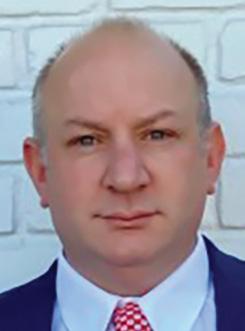
Executive Director of Stanford Transportation Stanford University
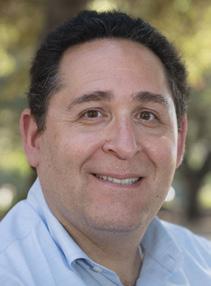
We will need to factor into our work diversity, equity, and inclusion issues and concerns. Ensuring everyone has access to our programs and services and determining who we are not reaching have become critical. Frontline folks should also be trained to respect and treat fairly anyone they encounter.”
John W. Hammerschlag PresidentHammerschlag & Co., Inc.
While keeping one’s technical skills current is essential and not an easy task, of even greater importance is to achieve a high level of emotional intelligence: defined as the ability to identify, assess, and control the emotions of oneself, of others, and of groups.”
HAVE A QUESTION? Send it to editor@parking-mobility.org and watch this space for answers from the experts. The opinions and thoughts expressed by the contributors do not necessarily reflect the opinions and viewpoints of the International Parking & Mobility Institute or official policies of IPMI.

FOR YEARS, hiring professionals and recruiters have been warning of the looming “War for Talent.” At the time, many companies accepted this possibility but brushed it aside as a slow-moving trend that would gradually be resolved over several years. Unfortunately, the pandemic had other plans and compacted years of resignations, redundancies, and retirements into less than 24 months. So here we are today, in the throes of a “Talent War.”
The reality is competition for top talent in the parking industry is extremely tight. Businesses that can’t compete will need to adapt in order to keep pace by turning to their internal talent pipelines and develop and upskill their current employees. As we move into a new era for parking, here are a few skills that will be in high demand for the next decade, and the ways in which you can upskill your biggest asset, your people
Create An Academy Training Program. In some cases, you will find a vice president or C-Level executive that has been with a parking company or organization for nearly 25 years, where he/she/they worked their way up the ranks from parking attendant to senior executive. These are the workhorses and the people that know every aspect of the business inside and out. In some cases, they may have a full knowledge of the business, but lack the softer skills of management involved with leading people. In the next decade, parking operations will need to draw from this talent pool, but first take a more committed approach to developing and upskilling their leadership skills. Every team requires a strong and experienced leader they can communicate with, trust, and learn from.
Organizations can partner with a learning and development team or external expert to curate a training program. Brand this as an “Academy or Institute” that will then be rolled out to eligible employees. Create various tiers of training modules or “courses” for every level of management that will eventually build upon previous learnings. Envision your training “Academy” as a multi-year upskilling program
that begins at the field level and prepares employees for senior leadership including:
● Managing and leading seamlessly in both virtual and physical workplaces.
● The most effective communication strategies and when appropriate to use each.
● Leading through inspiration and motivation, especially in volatile times.
● Managing both up to leaders as well as down to teams.
● Building upon current DEI initiatives and how to continue elevating the conversation.
For the business, employees will add more value, and improve their skills and advance their careers which will be a key retention strategy. Excellent people management skills are critical for building a strong culture, loyal workforce, and all-around better business. Those companies who have all three will see higher retention rates, engaged employees, and success for decades to come.
As we saw over the last 10 years, the only predictable market trends were disruption and change. To navigate this, employees needed to have a curious mindset about the world and industry around them.
COVID showed everyone, but most especially the parking industry, that adaptable thinking and agility was essential for solving staffing shortages to changing business models. For example, teams that tapped into their curiosity during the shifting dynamics of the pandemic, allowed for parking companies to adapt their pricing, business, and strategy to focus on more transient, special event-based, and residential parking. Companies that were not led by inquisitive leaders or lacked curiosity struggled through COVID. Disruption will continue to be a key trend for the next 10 years, and the parking industry must prepare to remain focused on innovation and change.
So how do you develop more curiosity within your people?
Start by assessing your team members and identifying who on the team has a curious mindset and approach to the world. These are the employees who are collaborative, offer up moonshot ideas, question processes, and introduce fresh concepts or dive into hypothetical situations. Upskilling this group of contributors to become more curious is not done by simple training sessions or learning and development initiatives, but by leaders and managers that encourage curiosity. With equity, mobility, and digitization transforming the industry, leaders should encourage stretch assignments that solve for these industry challenges and launch projects and discussions that spark innovation including:
● The impacts their products and services will have on other industries, communities, and society in general.
● An aging population and how to physically meet and cater to this group.
● An emerging generation that approaches driving and mobility in a completely new way.
● Transforming payments and accessibility to close the digital equity divide.
● Changing regulations and legislation within the auto industry.
All of these are opportunities for teams to collaborate and tap into their curiosity and develop this cognitive skill set. Companies that develop, encourage, and empower curiosity tend to be more agile in shifting markets, and are more likely to retain top performers.

As the parking industry evolves over the next decade, it will continue to become more segmented and niched requiring more specialized technology, tools, and technical talent. Looking ahead, employees will need more digital agility as a basic skill set - not only knowing how to use new technologies, but when to implement them across the business. This will require sales and operations teams to work more closely alongside automation and upskill their product and customer knowledge, becoming deeper subject matter experts in their field. Parking companies can upskill their teams’ technology skill sets and technical sales expertise in several ways including:
● Upfront Tuition Reimbursements or StipendsThese serve as an excellent way to both upskill your team and use it as a multi-year retention strategy.
● Send Employees to Conferences or Workshops



- Industry and trade events are often overlooked for acquiring new skill sets and facilitating collaboration. It also provides an employee the opportunity to experience their career and profession outside of the workplace.
● Mentorship and Reverse Mentorship Programs. Leverage generational skills up and down all levels of management. Seasoned experts can provide legacy and institutional knowledge and best practices, while emerging leaders can introduce new technologies, processes, or concepts to senior leadership.
● Gamify Implementation, Learning, and Software Adoption. With every new technology or process comes adoption or rejection. Gamify this process to create a seamless transition and incentivize employees to learn these new technologies and skills.
The parking industry will continue to grow, evolve, and integrate more deeply into sector-adjacent products and offerings. The key to maintaining a strong foothold as an industry leader and competitor for the next decade is to focus on not only hiring the best minds, but developing and upskilling your biggest asset, your people. ◆
KATHLEEN LANEY is founder and search consultant with Laney Solutions. She can be reached at kathleen@laneysolutions.com
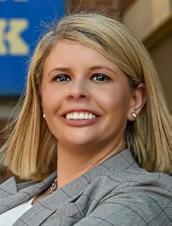

it’s not surprising that we have seen so many products and services become the new convenience and essential tools for people and companies. In fact, innovation is critical for companies to grow and succeed in this increasingly competitive economy. Netflix shook up the video rental industry, Airbnb changed lodging forever. These companies entered their markets as disruptors and continued to grow by building their offerings through new products and features. If you look at each of these companies, you’ll see that they all have been able to cultivate a work culture where psychological safety enables innovation within the workplace.
Psychological safety is the belief that people can share their thoughts and ideas without fear of being punished or ashamed. In a company where psychological safety is felt by its employees, people have empowered curiosity and tend to be more comfortable with taking risks, challenging the status quo, and making mistakes. With the journey toward innovation being filled with new challenges and unknowns, building a foundation of psychological safety is essential in enabling innovation for an organization and its people. But how can we build psychological safety within our work environment? According to Timothy R. Clark, Ph.D., author of The 4 Stages of Psychological Safety, in order for employees to truly feel a sense of psychological safety, companies will have to create an environment that satisfies four stages: inclusion safety, learner safety, contributor safety, and challenger safety.
By Andy SantosStage 1: Inclusion Safety is a need for people to feel like they belong and that they are welcomed and celebrated for who they are. As individuals, employees come to us with unique backgrounds and perspectives, and we want those unique voices to be heard. However, if employees don’t feel a sense of connectedness with their team or the company, a company may not be able to unleash the benefit of a diverse workforce and the potential of innovative ideas that may come from it. For leaders, it’s important to build connectedness within teams and crossfunctionally by aligning employees with the mission of the company. With a purpose-driven organization, it’s easier for people to be connected to the impact that they make and the feeling that everyone in the organization is working toward the same goal. Moreover, it’s important for leaders to create a space where people can be their authentic selves and that their voices are heard. Supporting employee resource groups, learning from them and proactively being an ally to everyone, especially those who are underrepresented can further strengthen connectedness with each other in the workplace.
learning that we gain from them. This can be put into practice through retrospective meetings in which teams identify what went well, what did not go well and what can be done better.
Stage 3: Contributor Safety is the stage of psychological safety in which employees feel that they have made a significant difference at work due to their skills and abilities. In this stage, employees get a sense of confidence and validation from the trust and autonomy that they receive from their team and their manager. Employees can get a sense of contributor safety from empowered accountability. This means that employees are trusted to make decisions and are given the freedom to navigate additional responsibilities to make significant contributions that align with company goals. Role clarity and effective onboarding is key at the beginning of the contributor safety stage. It’s important for new hires or employees who attain new roles as part of their career progression to have clarity on their responsibilities, goals, and
Stage 2: Learner Safety is present once employees feel a sense of empowered curiosity. When this stage of psychological safety is reached, employees are not afraid to make mistakes, try something new, and ask each other questions. They actively pursue discovery, solve difficult problems, and are more comfortable with uncovering the unknown. Learner safety is not just simply achieved by encouraging employees to learn. As leaders, it’s important to also provide the right environment and resources for learning. And more importantly, leaders need to nurture a work environment where employees see mistakes as an opportunity to learn and make progress. A good way to build this mindset of welcoming mistakes as a common part of progression and learning is to add it to your team norms. This sets the expectation that it is okay to make mistakes if we leverage the
what set of expectations they need to be aware of. From there, employee one-on-ones, career development conversations, performance management, and role progression play a big part in further supporting employee contributor safety. In fact, career progression can greatly increase contributor safety. However, as people leaders, we must remember that career progression does not always mean a promotion; it needs to be customized to the goals of the individual. For some employees, progression in their career may mean leaving your team and gaining the skills to transfer to another department.
Stage 4: Challenger Safety is a stage in which employees feel such a strong sense of psychological safety that they are comfortable challenging the status quo. Employees that progress to this stage are empowered to speak up because they believe that even if they end up being the odd one out of their team, they will not be reprimanded or humiliated. This sense of challenger safety can lead to conflict and difficult conversations. However, these disagreements can also lead to better products and services because members of a team are able to see their blind spots from the constructive feedback and different ideas they receive from others. It is important for leaders to harness the power of
and psychological resilience in the workplace. Psychological flexibility is a term that was coined by Todd Kashdan and Jonathan Rotterburg in their analysis published in Clinical Psychology Review in 2010. It is the ability to be present and to accept that obstacles will occur along with opportunities. Psychological flexibility measures how an individual responds to every situation they encounter while being fully aware of their emotions and thoughts. Individuals that have psychological flexibility can shift and rebalance their perspectives and keep an open mind to adjust their stance as needed. On the other hand, psychological resilience, a term originated by psychologist Emmy Werner in the 1970s, is the ability to cope with challenges. When an individual is fully aware of their mental and emotional state, psychological resilience enables them to manage any stressors that might affect them and be able to bounce back from a crisis to a pre-crisis state. Both psychological flexibility and resilience strengthens a team’s ability to innovate and move forward despite unexpected challenges. They play an even bigger role when companies face adversities that are out of the team’s control, such as a pandemic or economic downturn.
Leaders who are intentional in building a work culture supported by psychological safety understand its importance to enabling innovation and unlocking their team’s potential. In a recent study released by Ecsell Institute, managers with higher ratings in areas like psychological safety lead teams that bring in an average of $4.3 million more in revenue per year. Moreover, managers who received a rating of 9 or 10 on a 10-point scale for their overall performance as leaders received an average of 84% in their psychological safety score. On the opposite end, managers who scored a 6 for their overall leadership performance received a psychological safety rating of 36%. This study also confirmed the importance of the four stages of psychological safety based on the four things that managers can do to increase psychological safety according to the results of the research: encourage unique opinions, avoid micromanagement, support smart risk-taking, and move quickly past mistakes.
these positive conflicts by creating an environment where these disagreements don’t become interpersonal conflicts. Setting the right norms for the team can keep these challenger discussions productive and positive. A great way for our teams to engage in positive and productive challenger discussions is to practice active listening. This means that our leaders and team members engage in a conversation where each person listens to understand instead of listening to respond. From there, it’s important to focus on the ideas, thoughts and the situation being presented versus the people involved. And while keeping the team’s goal in mind, every team member must align or compromise on a decision based on their discussion. It’s critical that the team moves forward together and commits to the group’s decision on a path forward.
Teams who successfully build a foundation of psychological safety through these four stages promote psychological flexibility
By investing in psychological safety, leaders are also investing in the growth of their teams and their potential to discover innovative products, services, or processes that will significantly and positively impact the success of the company. Innovation allows companies to stay ahead of their competitors and capture bigger markets as they grow. Those who are not able to rise to the challenge of evolving consumer and business needs may get left behind. However, with a foundation of psychological safety, the path toward innovation remains strong even with the adversities that we may face. ◆
ANDY SANTOS is Director of People and Culture at SpotHero. He can be reached at andy.santos@spothero. com

DIGITAL TRANSFORMATION IS CHANGING the parking and mobility industry. Operators are adopting digital systems and preparing for the future of the parking, transportation, and mobility industry.
For agency/operators or technology provider professionals, now is the right time to take a hard look at their skills and acquire new ones. There are some exciting opportunities. However, flexibility and strong tech skills are important for maximizing them.

COVID-19 led to some changes in the parking industry. However, there are other important factors behind this transformation:
● There are more cars on the roads. More people need parking. Congestion is an issue, and operators need to build fast and convenient solutions.
● Flexibility is important for curbside deliveries and ride sharing. Mobility-as-aservice also creates new opportunities for revenues.
● EV adoption is up. People need access to charging. For operators, there is an
opportunity to offer charging and other services.
For many operators, tech tools are a key strategy to adapt to these new trends. For team members, these new tools often call for developing new skills.
Are you comfortable with apps and software? Employees who can quickly learn how to use a new tool have an advantage. Operators get the most out of their tech investments with digital fluent teams and will continue recognizing this skill.
By 2025, 60% of businesses will use automation for most of their tasks. The role of the employee will change. Automated systems will handle most of the work. Workers will focus on tasks that require human input, like giving instructions to the automated system. Those with strong tech skills will create more value for their employer.


Curiosity is an important skill. Team members who keep up with the latest trends, study use cases, and imagine the next solutions can help with innovation.
How do you feel about change? Can you learn to use new software fast? Those who can adapt quickly have an advantage. Employees will see their role change as the industry continues to evolve. In five years from now, your tasks and responsibilities could be very different.
Some operators are also adding new sources of revenue; examples include shuttle services or parking for special events. Employees who can learn new tasks fast can support these efforts.

Communication is key. The industry is going through some changes, and it’s more important than ever to communicate clearly. Communication can help employees work towards a common goal. It also helps connect with users.
Communication is also crucial for building partnerships. Partnerships with other businesses can help offer new services and add-ons that create value for users. Public-private partnerships will be important for developing an EV charging infrastructure.

What is the next tech trend for the parking industry ? Operators are currently going through changes, but EV adoption and other trends will continue driving transformation in the future. Operators need to always look for the next trend.

Behind every successful transformation, there are leaders who decide to change. As more operators turn to tech solutions, workers with leadership skills will get opportunities to shine.
You can make a difference by sharing new ideas and helping others adapt. At the industry level, operators can become leaders for change by embracing ideas like electrification or inclusivity.
The switch to digital systems accelerated during COVID-19. Touchless tech became commonplace in parking facilities, and many offices switched to remote work.
As more systems become digital, analog or manual tasks are disappearing while automation and remote systems are becoming the norm. For instance, contactless payments can take over the role of the parking attendant. These changes are only the beginning; experts predict the smart parking market will grow at a rate of 22% between 2022 and 2030.
For parking and mobility industry professionals, replacing analog processes with digital alternatives creates new challenges.
The learning curve for some tech tools can be steep at first. Employees need to familiarize themselves with a new interface and navigate new features. For teams adopting automated tools, there is usually an adjustment period. Employees need to rethink the way they work. Automation helps save time, which means teams can focus on other areas to create value. Finding a way to apply best practices and standards to the digital environment can also take time. Plus, operators must account for new challenges like data privacy and cybersecurity.
Data and analytics can unlock value for the parking and mobility industry. Collecting data about traffic and parking usage can reveal interesting patterns, and this data can help with flexible
pricing models and more. Learning to work with data is a valuable skill. Professionals need to ask the right questions and find the right data points to track. Modern analytics tools can do a lot, but it’s easy to become overwhelmed with all the data available. It’s important to determine which data points are meaningful and can support goals.
With thousands of apps and other tools available, operators can create a customized IT ecosystem. And with cloud hosting, it’s easy to add or remove apps and systems as needed. The result is a flexible and scalable environment.
This approach does help reduce costs; however, it often means new expectations for employees. With legacy systems, leaders typically expect employees to know how to use a single tool. This new model often means employees must become familiar with the entire ecosystem. This creates a barrier for those who don’t have strong tech skills.

This model can also create more work. Cloud computing helps remove silos between teams. Leaving the silo model behind is a good thing, as it reduces redundancies and lowers costs, while also improving visibility. However, breaking down silos can create blurred lines between teams. In some cases, employees end up with more tasks and responsibilities than before. On top of having to learn how to use new tech tools, employees must manage a larger workload.
How can teams communicate in a digital environment? Faceto-face meetings are becoming less common, as teams instead opt for texts, emails, and video calls. Some operators are even using remote tools to hire and train new employees. Digital communication is also changing the way users interact with mobility and parking services.
Self-service payments make things easier for users. They also help with collection and enforcement. And for many operators, self-service systems reduce costs. However, digital parking management solutions mean fewer opportunities to connect with users. The new parking experience can feel impersonal.
Operators can use different tools for engagement:
● Digital signage can show contextual information.
● A website and social media presence can deliver information.
● Apps can support tasks like finding parking or paying.
These tools will help meet the needs and expectations of users when it comes to accessing information. It’s also important to add
some human touchpoints for a more genuine experience. For instance, a phone number with agents available to help users can replace face-to-face interactions. Having a parking ambassador present can also result in a hybrid experience that feels more humane and engaging.







Inclusivity is a hot topic. While tech solutions have many benefits, they can also exclude some people. The digital divide is an issue operators need to acknowledge. Even though 97% of American adults have a cellphone, 15% don’t own a smartphone. For one in four adults, using an app or browsing the web on the go isn’t an option. Some users might not feel comfortable with digital tools, while others could be concerned about sharing their data.
Familiarity with apps and other tools can vary a lot, as certain demographics will have a higher adoption rate than others. While some operators work with users who belong to a specific industry like higher learning or healthcare, public agency operators need to account for diverse users.
The digital divide is more likely to affect people over 60. Those who earn less than $35,000 are also at risk. An inclusive mobility infrastructure can connect these users to job opportunities, healthcare, and more.
Operators can build a more inclusive environment:
● Offering more than one payment option is important for those who don’t have a phone or a debit card.
Sharing clear instructions for apps and other tools can help with adoption. Having a parking ambassador present means users can ask for help if they need to.

Remote work can get in the way of a strong company culture, making it important for employers to prioritize this as part of their remote systems. This approach can improve the employee experience and support positive morale and retention. Additionally, sharing the same values means everyone cares about customer service. These strategies will help preserve your culture in a digital world:
● Good communication skills help explain what your values are.
● Remote presentations or video calls can boost engagement for team members.
● Celebrating achievements and milestones is important, even if you do it via email.

● Support employee wellbeing. New perks and flexible hours can make a difference.
● Rethink training for new hires. Develop material that reflects your culture and values.
● Value digital leadership. Good leaders can help with team cohesion in a virtual workplace.
For some operators, hybrid work might be a better fit. This approach has all the perks of remote work while allowing for some inperson interactions.


Digital transformation is changing the parking and mobility industry. With automation, remote work, and self-service payments, operators are adopting streamlined processes. This approach often results in lower costs and leads to a more convenient experience, but it also creates some challenges.



These changes are opportunities for operators. However, it’s important to remain flexible, prioritize communication, and focus on building a digital environment that is also inclusive. ◆

CARMEN DONNELL, CAPP , is Managing Director, North America for PaybyPhone, and is Co-Chair of the IPMI Technology Committee. She can be reached at cdonnell@paybyphone. com

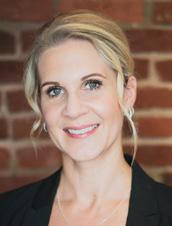
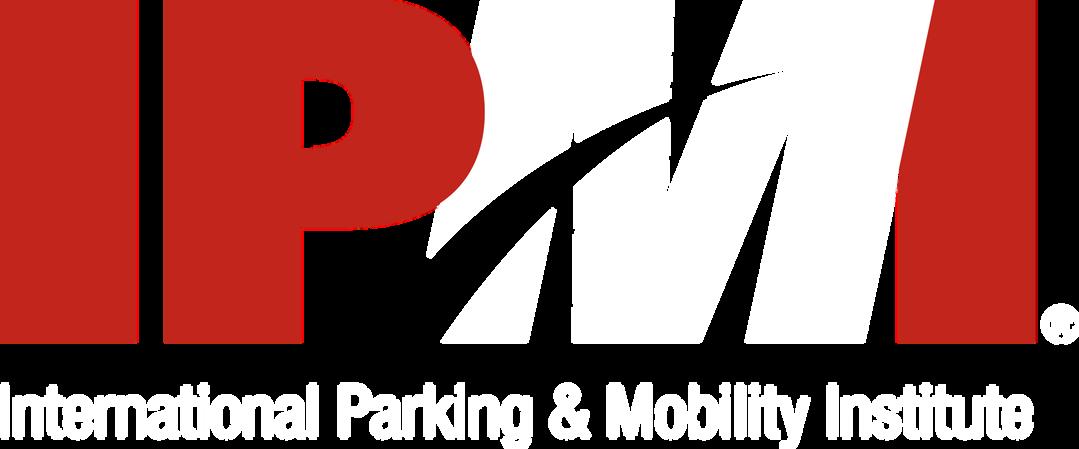
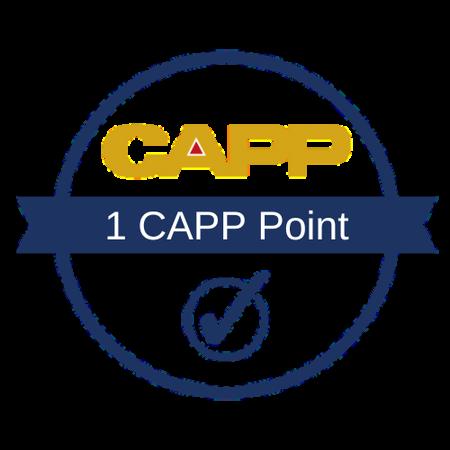

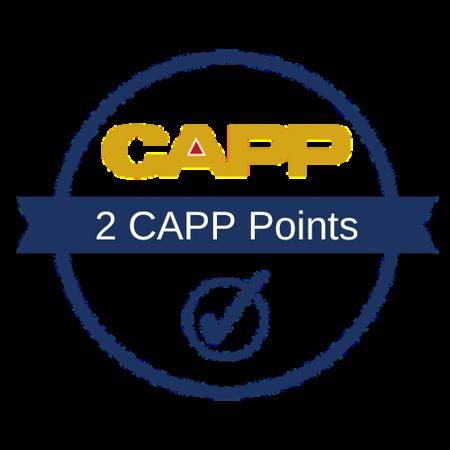
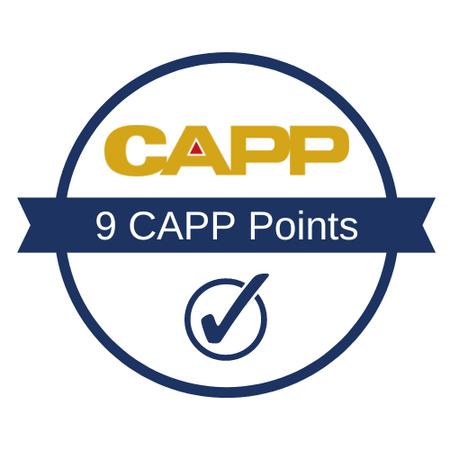
MY FIRST FORAY INTO PARKING WAS AN UNEXPECTED ONE. It was 2003, and I was employed as a security guard at a medical facility in Tacoma, Washington. The company I worked for at the time also had a valet division, and they invited me to apply for an Assistant Operations Manager position, overseeing the valet parking of up to 500 cars daily. Valet? I had management experience, so I thought, “Sure, ok. How hard can this be?” Very hard, as is turns out! I was very unhappy in the role, and after three years I left the position to return to school full time to finally get my bachelor’s degree—because I was never going work in parking again! Fast forward 18 years and here I am: 1,800 miles from where I started, developing a new parking program for a city I have come to love.

So how did I get here?
How do you explain to people what you do for a living? Two of the most popular questions I get are, “You park cars for a living?” and “Parking is a thing?” I am not ashamed to admit that I will talk about what I do for a living any chance I get, because I truly love what I do. In our world, no two days are the same. We operate under any and every condition imaginable. We work in an environment where there are dozens (if not hundreds) of seeming disparate pieces of information presented to us and we must make sense of it all. We must organize it into an effective and efficient operation and do so in a landscape that is always evolving—all while reporting to multiple stakeholders.
As my parking career evolved, I have had the privilege of working in some of the most beautiful and luxurious hotels in our country. I’ve worked on task forces opening new locations in new markets. I’ve been able to develop processes and programs on an organizational level. I haven’t always been successful; anyone who tells you that their journey in parking has been without bumps or bruises is either lying or they have not pushed themselves. Anyone who has spent any length of time in our industry knows there is always that one account, that one client, market, or organization that was not a fit. But that is okay. Our industry is multi-faceted, and you will find a place where you belong. And there is always room to grow, to learn, to flourish.

Customer service, specifically in hospitality, is where I excelled. There was nothing more rewarding than successfully executing back-to-back events: the ones where you parked hundreds of vehicles in the matter of a mere half hour; the ones where you finally arrive home at 2:00 AM exhausted but still high on the adrenaline rush of success. And then there were the days where you failed spectacularly and made the evening news for
causing an “unprecedented” traffic back up in your city (or so I have been told). It happens to the best of us. But you keep going, you keep learning, you keep doing better because you chase that euphoric feeling of mastering the chaos. I only stepped away when I did because I started a family. But it was not too long before I started to reminisce about the good times and people I met along the way. Soon, I found myself looking for parking positions online.
Thankfully, Jeff Barnes CAPP, Director of Parking and Transportation at Kansas State University (K-State) took a chance and hired me to be the Assistant Director of his department. He had been at K-State for over 20 years, and he knew what he was looking for and what he needed in a Number Two. I will admit, university parking was a different beast. I was able to utilize my customer service background and approach enforcement not from a punitive lens, but from a customer centric perspective. I learned the ins and outs of lot and garage maintenance. Jeff also taught me the art of listening, to sit in a room full of people with competing ideas and just listen and observe. That is how wellinformed decisions are made. Sounds simple enough, but anyone who has ever spent any length of time with me knows I can be a bull in a china shop. I will forever be grateful for Jeff and his leadership during my time there.
However, it wasn’t until I became a member of IPMI, and I began to work toward my CAPP certification, that I realized just how much more I had to learn. I took online courses from IPMI and made connections with other industry professionals. Not only was earning my CAPP certification a goal on my performance review, but it was a personal goal of mine as well. And I failed my first test. As most who have taken the CAPP exam will attest to, is not easy. Standardized tests are not my forte.
However, after some additional studying and a better understanding of how the test was formatted, I easily secured my certification the second time around.
The CAPP certification is not just a piece of paper. The letters at the end of your name are not just a designation or outward symbol of attained knowledge. They represent the commitment you have made to your career. When you earn that designation, you commit to the process of continually learning and growing within your field.
That commitment led me to the position I have today. I currently serve as the Parking Services Manager for the City of Manhattan, Kansas. This is a newly created position, and I am helping to shape it. In fact, I helped write the job description for it while I was at K-State. My work with the City of Manhattan in the previous months landed me the opportunity of a lifetime. I get to build a brand-new parking and mobility division for the City of Manhattan. As I write this, I have two
will be designed with the intention that we will operate at the highest level and earn our APO accreditation within our first year.
To do this, every week my staff and I will meet to review, prioritize, and implement a different category on the matrix. We will check in regularly with our evaluation team and speak with other APO accredited parking organizations about their successes and failures. My staff will also work towards their CAPP certifications and take classes through IPMI and training opportunities as they arise. I know, it is a lot to take on. But if you know me, you know that I accomplish whatever I put my mind to.
None of this would be possible without the buy-in and support of my well-seasoned, 20-year parking enforcement veteran, Heath Romine. As I type this, he is working on our new officer training manual and making notes of ordinances that need to be updated. It truly is a collaborative effort; one where we shout ideas at each other from across the hall. These ideas then fill the white board, color-coded dividers and documents are being added to binders, timelines are being created. A potential contractor said our office was reminiscent of a startup company, and I guess to some degree he was correct; except for the fact that we have the guidance and support of IPMI and a brilliantly laid out matrix which all but assures us that we will succeed in our efforts.
parking enforcement officers and a new garage that just opened. Over the next nine months I will hire a parking management company, hire and train more enforcement officers and office staff, develop training programs, start a permit program, review and develop parking ordinances, and create an operating budget to span the next five years. And I’m not including all the little tasks we as parking operators do on a daily and weekly basis. And I am loving every minute of it.
To help me succeed I will be using the Accredited Parking Organization (APO) matrix as my guide. In a first ever program of its kind, I will build my department using the 14 categories and 130 individual criteria listed to ensure that everything we do is executed to the highest standard in our industry. From our site manuals to our officer and customer service training programs, all
I am sure we will be challenged in the coming weeks and months. I am sure we will have days where it feels like too many pieces of information are coming at us, and deadlines appear unexpectedly or without warning. However, with the backing and support of IPMI I have no doubt that we will rise to the occasion. I believe in my experience and my capabilities but more importantly, I believe in my team and the organization that I work for. I believe in our mission statement which says, “We put the well-being of people at the heart of everything we do.” So long as we continue to move forward with our mission in our hearts and our work, we will create an amazing program. One in which other organizations can look to as an example of what it means to be best in class. ◆
ADRIENNE L.M. TUCKER, CAPP , is Parking Services Manager for the City of Manhattan, Kansas. She can be reached at adrienne.tucker@cityofmhk.com
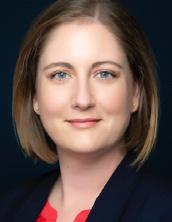
Our industry is multi-faceted, and you will find a place where you belong. And there is always room to grow, to learn, to flourish.



E a r n t h e l e a d i n g c r e d e n t i a l i n p a r k i n g a n d m o b i l i t yJamie Snyder, CAPP Senior Parking Consultant Walter P Moore
WINPARK , the Houston-based parking company powered by Propark Mobility, announced today that the company has promoted Amy Zaid to Senior Vice President.

“Amy is an exceptional leader, who has made a tremendous impact on the company over the years,” said Drew Riley, Winpark President. “Her passion for her work and her innovative approach to the industry have not only fueled her personal success, but also the success of the Winpark team and its clients. We’re excited to see the contributions she’ll make to the company as Senior Vice President.”
Amy joined Winpark in 2011 as an assistant parking manager and quickly excelled within the company, rising to parking manager, regional manager, and, most recently, regional vice president. Throughout her 11 years with the company, she has led initiatives that have streamlined operations for clients and enhanced Winpark’s offerings. Additionally, she has become a mentor for other professional women in the industry, using her vast experience and diverse skillset to help them excel within their own careers.
“Amy’s dedication is second to none,” said John Reimers, Propark’s Chief Operating Officer. “Her organic ascent within Winpark is indicative of her deep understanding of the industry and her commitment to clients and customers throughout Houston. The entire Propark organization is grateful to have her on the team and we know she will continue to reach new heights in this position.” ◆
PEER GHENT , the project manager for LA Express ParkTM and steadfast advocate for California disabled placard reform, passed away on September 26, 2022, at the age of 83. Peer joined the City of Los Angeles Department of Transportation (LADOT) Parking Meters Division in October 2008 as a Senior Management Analyst. His then new role was to help develop and lead the City’s new demand-based intelligent parking management system for Downtown Los Angeles called LA Express ParkTM. After a successful pilot of the system beginning June 2012, he continued to lead the expansion of the program to other notable areas of the city (Westwood, Hollywood, and Venice) and win multiple parking awards in the process including the CPPA Public Parking Program of the Year and IPI Award of Excellence for LA Express Park.

Peer was eager to share his knowledge and present at several parking and technology conferences across the world about parking technology, demand-based parking pricing, and it’s Achilles heel, disabled placard abuse. Peer’s contributions to the parking industry extended beyond his speaking role at conferences. An avid writer with keen intellect, Peer published several papers including , LA Express Park – Curbing Downtown Congestion through Intelligent Parking Management (coauthored for the 2012 in 19th ITS World Congress and updated in 2014 for the 21st ITS World Congress); Using Analytics to Understand On-street Parking: the Impact of Special Permit Use and the Benefit of Demand Based Rates Over Zones (co-authored for the 2015 22nd ITS World Congress); Optimizing Performance Objectives for Congestion Pricing Parking Projects (2015 Transportation Research Record: Journal of the Transportation Research Board); and Chapter 41—LA Express Park in Professor Donald Shoup’s 2018 book Parking and the City.
Peer knew how to make a personal impression with his outgoing personality, witty sense of humor, and knack for always having a story ready to share for anyone interested in hearing about his intriguing and colorful past professions. Prior to joining LADOT, Peer was principal management consultant at Peer Ghent & Associates for more than 20 years, lecturer at University of California at Los Angeles Graduate School Management, executive at multiple companies including president of Peterson Baby Products, and operations research analyst for Secretary of Defense McNamara. Peer held a Bachelor of Civil Engineering from Cornell University, and a Master of Business Administration from Harvard Business School. Peer is survived by his wife, children, and grandchildren. ◆
Submitted by Ken Husting, PE, Principal Transportation Engineer— Parking Management, Los Angeles Department of Transportation.
NMI , a leading full commerce enablement technology company, has acquired the Agreement Express payments solutions, including onboarding, underwriting and risk monitoring capabilities designed for current and emerging leaders in financial services. Together, the pair’s joint offering enables ISV, ISO and fintech partners to sign up and monetize merchants more quickly and easily.
With the addition of Agreement Express’s payments solutions, NMI has expanded its full commerce enablement offering to include world-class underwriting and risk monitoring capabilities that substantially enhance its merchant sign-up offering. This acquisition further strengthens NMI’s vision to enable payments from sign-up to pay-out for its channel partners and merchants.
“NMI continues to push the boundaries beyond traditional payments, and this acquisition exemplifies exactly that,” said Vijay Sondhi, CEO of NMI. “Bringing together NMI with Agreement Express addresses market demand for simplifying underwriting and will allow us to deliver more value per merchant to our partners.”
Through this acquisition, Agreement Express will expand NMI’s capabilities by providing ISVs, ISOs and fintech partners with customizable risk scoring, automated data collection, compliance monitoring, ongoing Know Your Customer (KYC), anti-money laundering (AML), and fraud screenings. This will allow channel partners to easily streamline these processes and
grow their merchant portfolios without the heavy lift.
“Coming together with NMI was a natural fit and creates added value through a new distribution channel to not only our joint partners, but also the broader market,” said Dave O’Brien, CEO of Agreement Express. “As the payments landscape continues to evolve, companies are looking for new ways to scale with modular solutions and bringing together our solutions provides even more freedom of choice.”
Agreement Express is headquartered in Vancouver. NMI welcomes the Agreement Express employees from the payments segment of the business into the NMI family. Berenson & Company served as financial advisor to NMI and DecisionPoint Advisors served as financial advisors to Agreement Express in connection with the transaction. Terms of the acquisition are undisclosed.
NMI is specifically acquiring Agreement Express’s payments solutions. Private equity firm Frontier Growth will continue to own Agreement Express’s wealth management arm of the business.
This deal follows NMI’s acquisition of IRIS CRM in January. Together, they provide added value for partners by bringing together easy sign-up and onboarding for merchants with the ability to quickly monetize payments. This acquisition of Agreement Express capitalizes on that momentum and demonstrates NMI’s continued growth. ◆
The New London Parking Authority has announced the launch of the Flowbird App to make it easier for motorists to find and pay for parking downtown. At a time when touchless payments are increasingly popular, the Flowbird App offers peace-of-mind for both the City and its drivers.
The Flowbird App allows users to pay for parking from their mobile devices, receive text notifications when time is about to expire, and extend their time without having to run to a meter.
“The addition of this convenient payment option is an effort to improve the experience of visiting our shops, restaurants, and other businesses around the city,” said Carey E. Redd, II, Director of Transportation, Transit and Parking, in New London.
Designed as a true mobility app, the Flowbird App features a map-based user interface, integrated with Waze and other navigation systems to guide users to their preferred parking location. The GPS enabled map also allows users to select their parking location without manually inputting a zone code.
Setting up an account is quick and simple after the app is
downloaded to a mobile device from the App Store or Google Play Store. Accounts can be set up for individual motorists or for businesses to manage their fleets.
The Parking Authority will benefit from Flowbird’s powerful data hub. All parking activity information from Flowbird pay stations and the Flowbird mobile app are aggregated into Flowbird’s back-office system to allow staff to have a global view of all parking activity.
Other methods of payment will continue to be available at Flowbird kiosks throughout the City’s lots, such as by credit or debit card, or with quarters and dollar coins.
The Flowbird app launched on December 12th in New London, followed by a Flowbird ambassador outreach throughout the City.
The City of New London joins several other cities across the northeast utilizing the Flowbird app, including West Hartford, CT; New York City, NY; and Boston, MA, among others. For more information, please visit www.flowbirdapp.com ◆
VAN PATTEN GOLF CLUB has been one of the top golf courses in the Capital Region of New York State since its founding in 1968. Much of their success over the years can be attributed to their dedication to their sport and their constant self-evolution as a destination. The club has taken a step toward the future of green energy in their latest investment; an installation of 50 charging stations for electric vehicles. Livingston Energy Group, a Lynkwell company, is a Schenectady, NY-based solution provider for EV charging stations. They have partnered with National Grid’s make-ready program to secure grant funding for Van Patten’s project. This installation is the largest single deployment of electric vehicle chargers in Upstate New York and is setting an example for others in the entertainment and tourism industry to make changes to accommodate the increase in electric vehicle drivers.
Located in Jonesville, NY just north of Clifton Park, Van Patten Golf Club is host to a recently renovated 27-hole course and 15,000 square-foot clubhouse that features a full restaurant and bar. Their venue space allows them to host and facilitate local events, making them a destination not just for their members but for the public as well. This is precisely why Van Patten has chosen to accommodate its ever-growing patronage by providing vehicle charging stations to all those who visit.
Since 2016, Livingston Energy Group has assisted municipalities, developers, and facility managers with the adoption of more efficient technologies and is focused on cutting-edge solutions to support the rapid growth of electric vehicle adoption. Through their robust catalog of hardware and
software solutions, they can design EV charging solutions for any size deployment. The 50 charging stations at the Van Patten Golf Club utilize the Livingston Charge Port EV charging network that allows their patrons to easily locate and activate the charging stations as well as enables the golf club to use real-time station monitoring.
The Van Patten Golf Club, Livingston Energy Group, National Grid, the Saratoga County Chamber of Commerce, and the Capital Region Chamber of Commerce held a special ribbon cutting ceremony for the new charging stations on Thursday, December 1st at 11:30 AM.
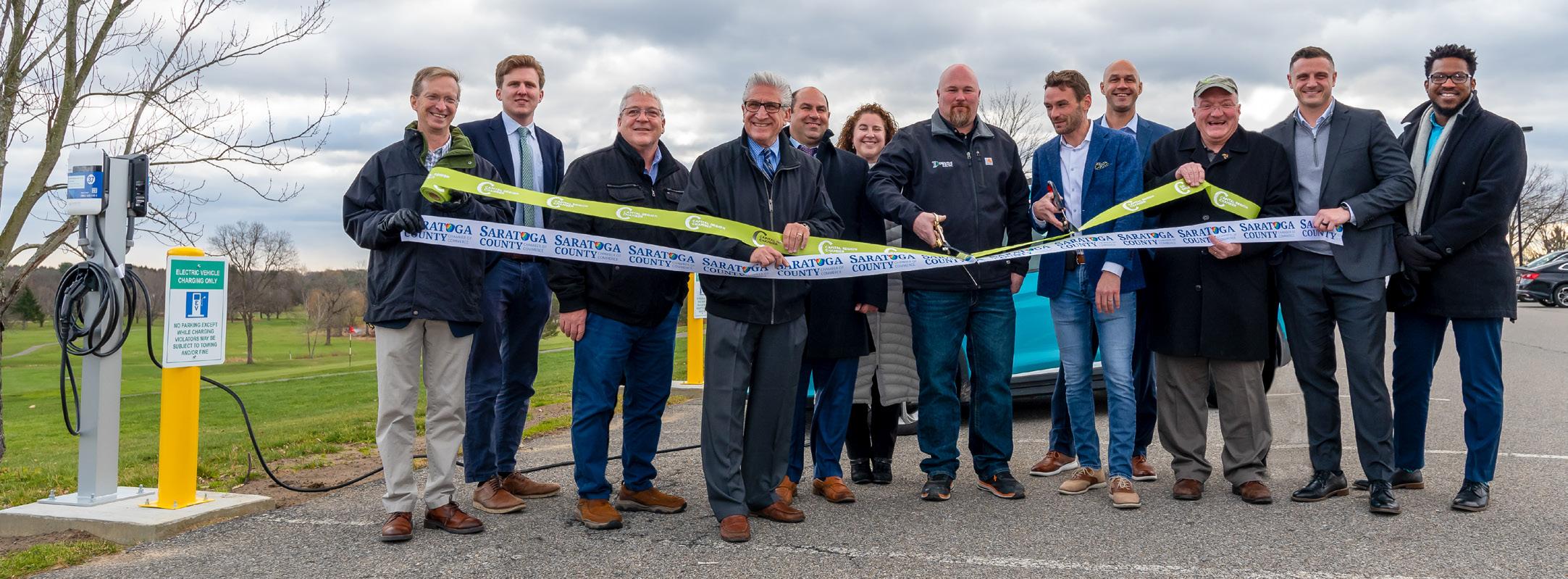
“As New York continues its transition to clean energy, it’s important that we continue to support and expand electric vehicle charging infrastructure. Thanks to Van Patten Golf Course & Executive Electric, Livingston Energy Group and National Grid, the largest electric vehicle charging station deployment in the state is now located here in the Capital Region”, said Assemblyman Angelo Santabarbara, a long-standing member of the NYS Assembly Committee on Energy. “This announcement marks another important step in achieving our goal of building more sustainable, vibrant communities. I commend the local organizations and community leaders that worked collaboratively on this important project.”
Joe Gunther, General Manager at Van Patten Golf Club, said “The Van Patten Golf Course has always been committed to providing our golfers with accommodations that make their day fun and worry-free. Now, with the help of Executive Electric, National Grid, and Livingston Energy, we are able to provide EV
owners the opportunity to charge their vehicles while they enjoy a round of golf or a fabulous meal at The Cooley Kill Restaurant. Electric Vehicles are quickly becoming the future for New York State, and we are proud to be one of the largest charging stations currently available for EV owners.”
Brian Sano, Regional Executive, National Grid commented that, “This installation at Van Patten Golf Course includes 50 plugs that National Grid contributed $270,000 to help fund as part of our statewide effort to increase chargers. Our program will fund up to 100% of the electric infrastructure costs associated with new EV charging stations like those here in Clifton Park. Working with local installers, like Livingston Energy, has made these projects possible.”
“Livingston Energy Group is proud to partner with Van Patten Golf Club and National Grid on this record-breaking initiative,” said Nick DiSarro, Director of Project Design and Development at Livingston Energy Group. “We are excited to take part in a project of this magnitude, that allows for patrons and guests to charge up while they are at Van Patten. This project has gone hand-in-hand with the recent restructuring and renovation of the entire course and will ensure that their location continues to draw activity to their clubhouse throughout the off-season.”
The installation of 50 EV charging ports at Van Patten Golf Club is an exciting new amenity for visitors as well as the general public. Guests attending their numerous golf outings, weddings, banquets and special events will have the opportunity to charge their vehicles while they are enjoying all that the location has to offer. The charging stations are accessible through the Charge Port EV Charging mobile app available on the Google Play & iOS app stores. Learn more about Van Patten’s current golfing options, events, and renovation plans on their website ◆
UMOJO , the parking and mobility industry’s leading provider of communication, data analytics, and automation solutions has announced its executive appointments and expanded solution offering to empower smarter urban on-street and off-street management in 2023 and beyond.

Umojo is thrilled to elevate Director of Strategy, Tyler Kirsh, to the position of Chief Financial Officer. Tyler has been with Umojo for four years, and over that time has been instrumental in driving business planning and operations, finance, and strategy for the company. As CFO, Tyler will play an integral role is scaling the company’s operations for aggressive growth in 2023.
Umojo has also brought on as VP, Head of Marketing, Jordan Weiss. Jordan, an experienced Parking Industry Marketing leader, will oversee Go-to-Market strategy, messaging, demand gen, brand, and will play a key role in driving market leadership for Umojo across its portfolio.
“I am excited to leverage my tenure at Umojo and expand my responsibilities as we look to building the future of the company,” said Kirsh. “We are entering an exciting time in Umojo’s journey, and I look forward to helping drive strategy and growth with our current valued customer partners, while entering new markets and driving leadership amongst a new customer base.”
In addition to these strategic personnel announcements, Umojo is excited to bring to market its NexCity solution to drive more efficient and safer management of on-street, curb operations. NexCity is a powerful tool that can be used by cities across the world, allowing municipalities to gain control of their curbs, increasing revenue, lowering operation costs, easing traffic congestion, while increasing safety of pedestrians (Vision Zero) and curb equity.
“Since our founding in 2011, Umojo has long become the gold standard in the parking industry for communications and automation in parking facilities.” stated Rick Neubauer, Founder and CEO, “As we continue to grow and cement our leadership in off-street parking, we could not be more excited to take that expertise to the next level and help municipalities modernize their curb management with NexCity. And with the promotion of Tyler Kirsh and addition of Jordan Weiss, we are poised to take both on-street and off-street by storm in 2023.”
With over 3,500 customer locations across globe, Umojo has given operators the freedom and flexibility to integrate a mix of hardware and software, to automate and remotely manage their properties with a multimedia dashboard and data tracking that allowed them to continually improve their operations and get smart about what was really driving their business forward. NexCity is designed to take that core technology architecture that has made the company such a trusted industry partner, and tailors it to an end-to-end solution using the most accurate video artificial intelligence in the industry. Integrated with current city assets and data, and the ability to communicate with that technology and the rest of the city assets, enable municipalities an unparalleled level of intelligence, visualized all via a single pane of glass. ◆

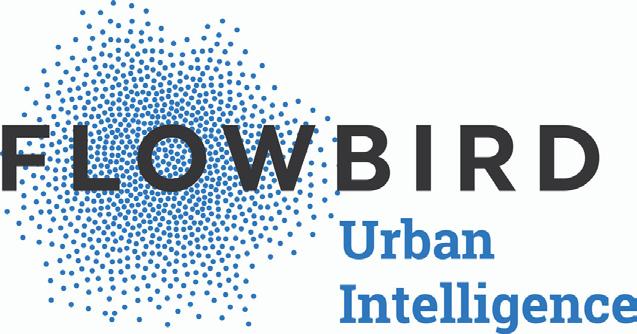





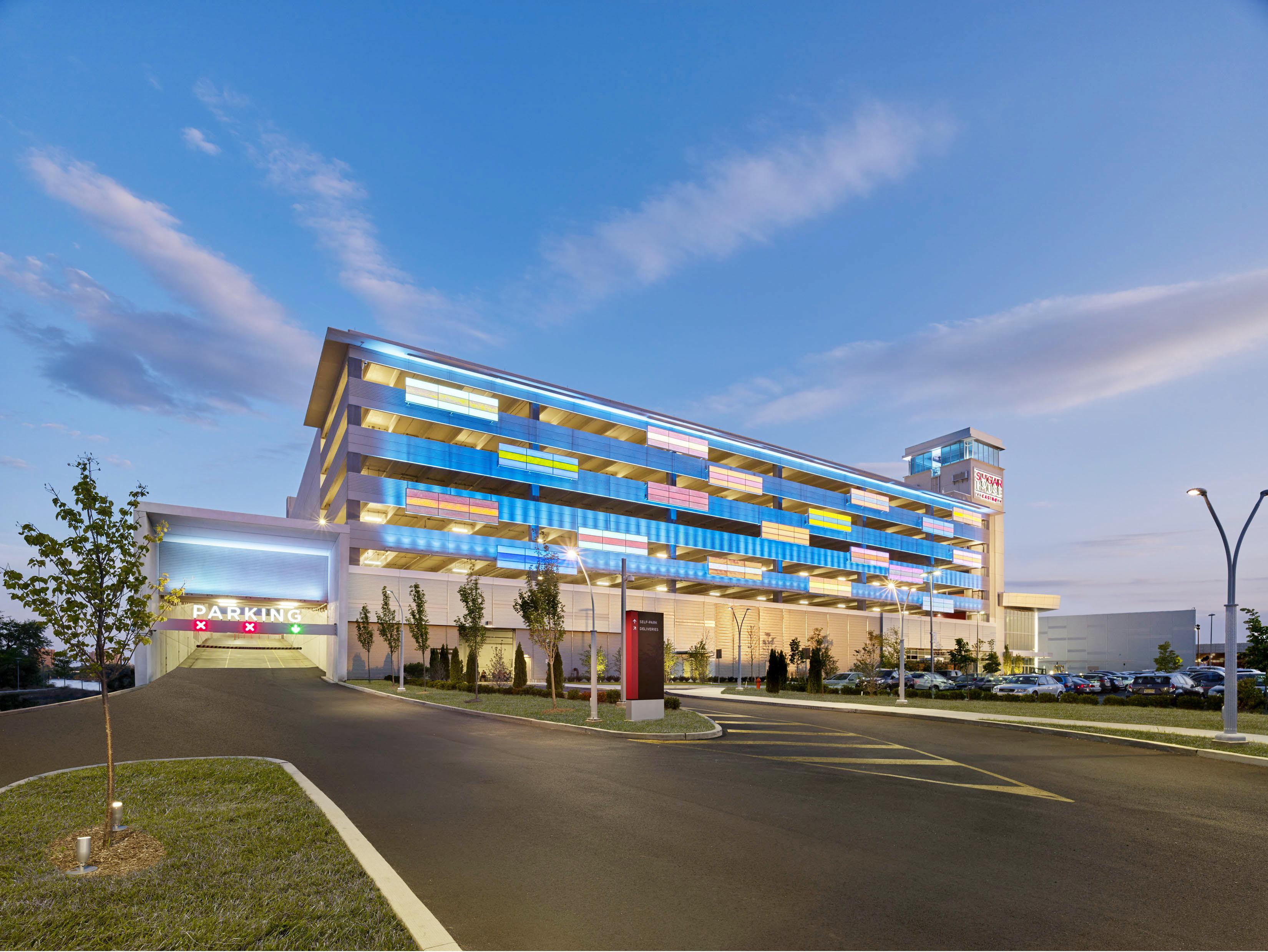
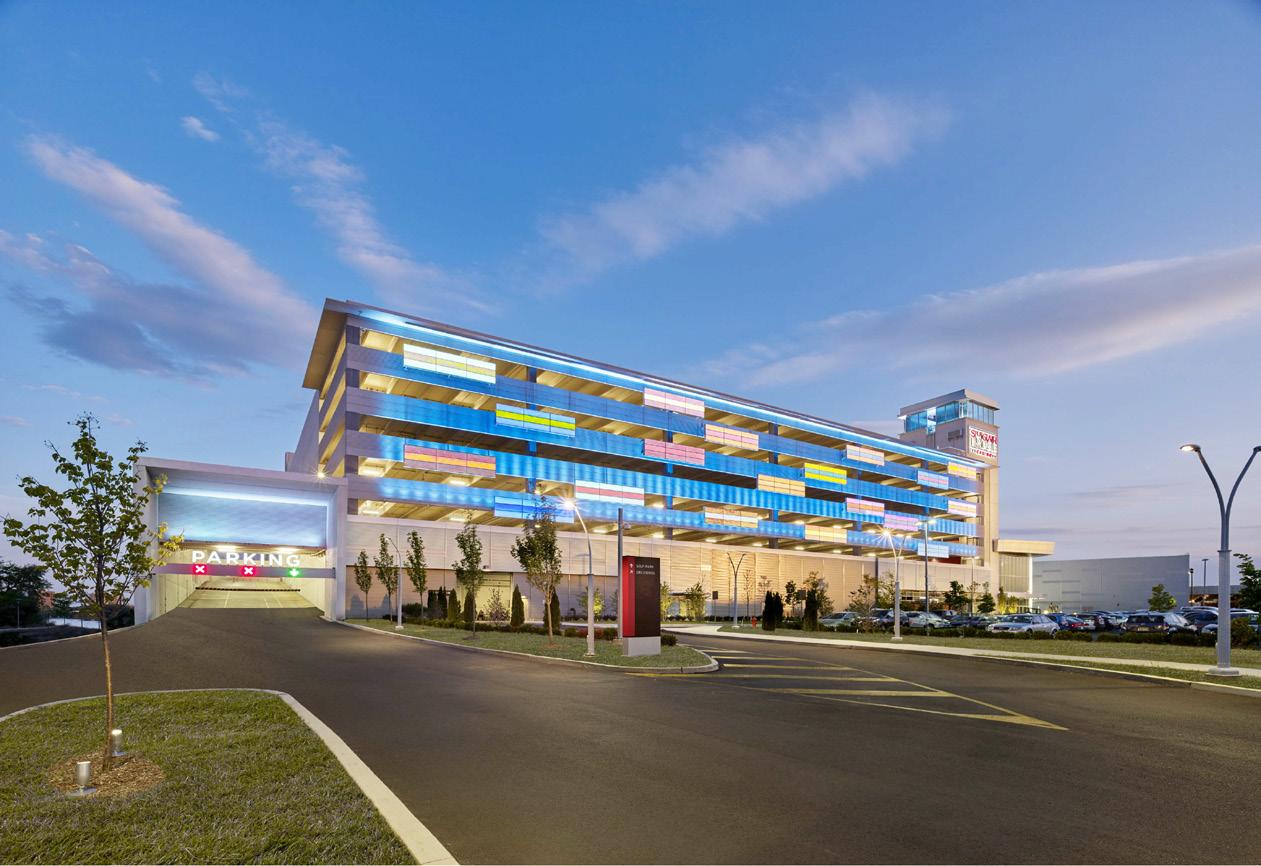
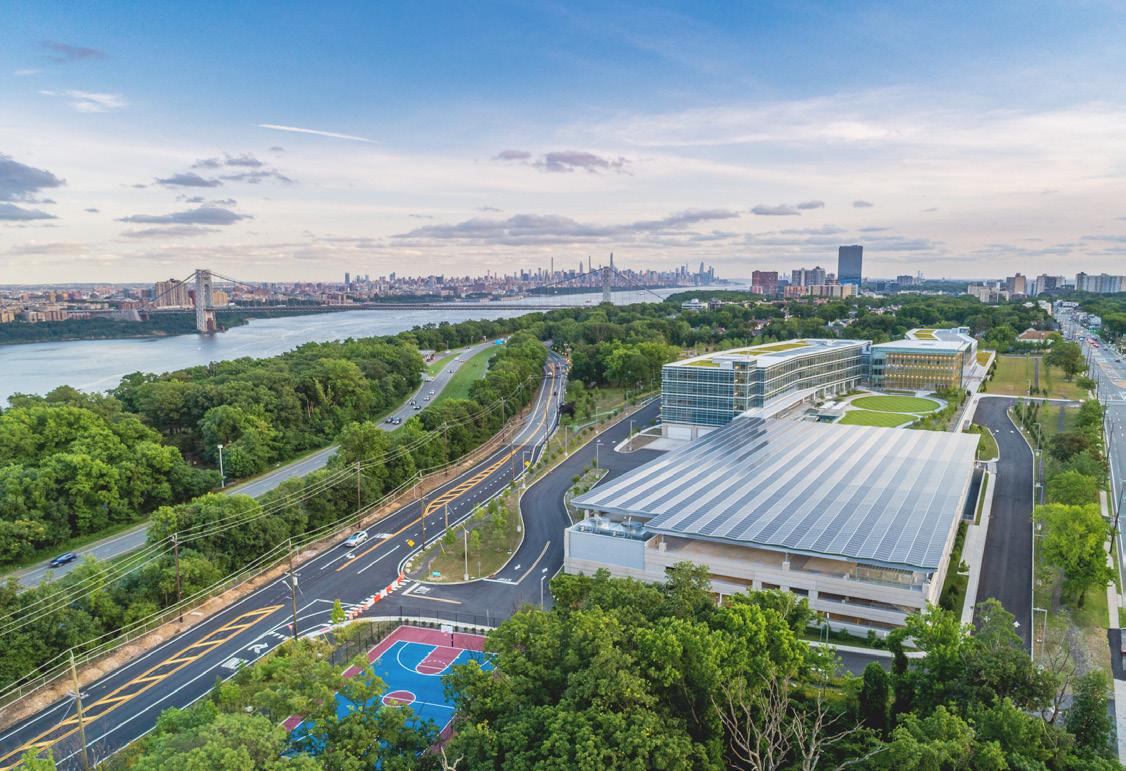




IPS Group Inc . . . . . . . . . . . . . . . . . . . . . . . . . . . . . . . . . . . .C2 ipsgroupinc.com 858.404.0607


Kimley-Horn and Associates, Inc . . . . . . . . . . . . . . . . 1, 45 kimley-horn.com/parking 919.653.6646
Leonardo/ELSAG LPR Solutions . . . . . . . . . . . . . . . . . . . 9 leonardocompany-us.com 877.773.5724
THA Consulting . . . . . . . . . . . . . . . . . . . . . . . . . . . . . . . . . .45 tha-consulting.com 484.342.0200
Walker Consultants . . . . . . . . . . . . . . . . . . . . . . . . . . . . . .45 walkerconsultants.com 800.860.1579
WGI . . . . . . . . . . . . . . . . . . . . . . . . . . . . . . . . . . . . . . . . . . . . 13 WGInc.com 866.909.2220
A podcast about parking, mobility, and the people who make it all go. Hosted by Isaiah Mouw with new episodes every other Tuesday at 10 a.m. Eastern. Listen on Spotify, Apple Podcasts, Google Podcasts, SoundCloud or any other major podcast provider. parkingcast.com



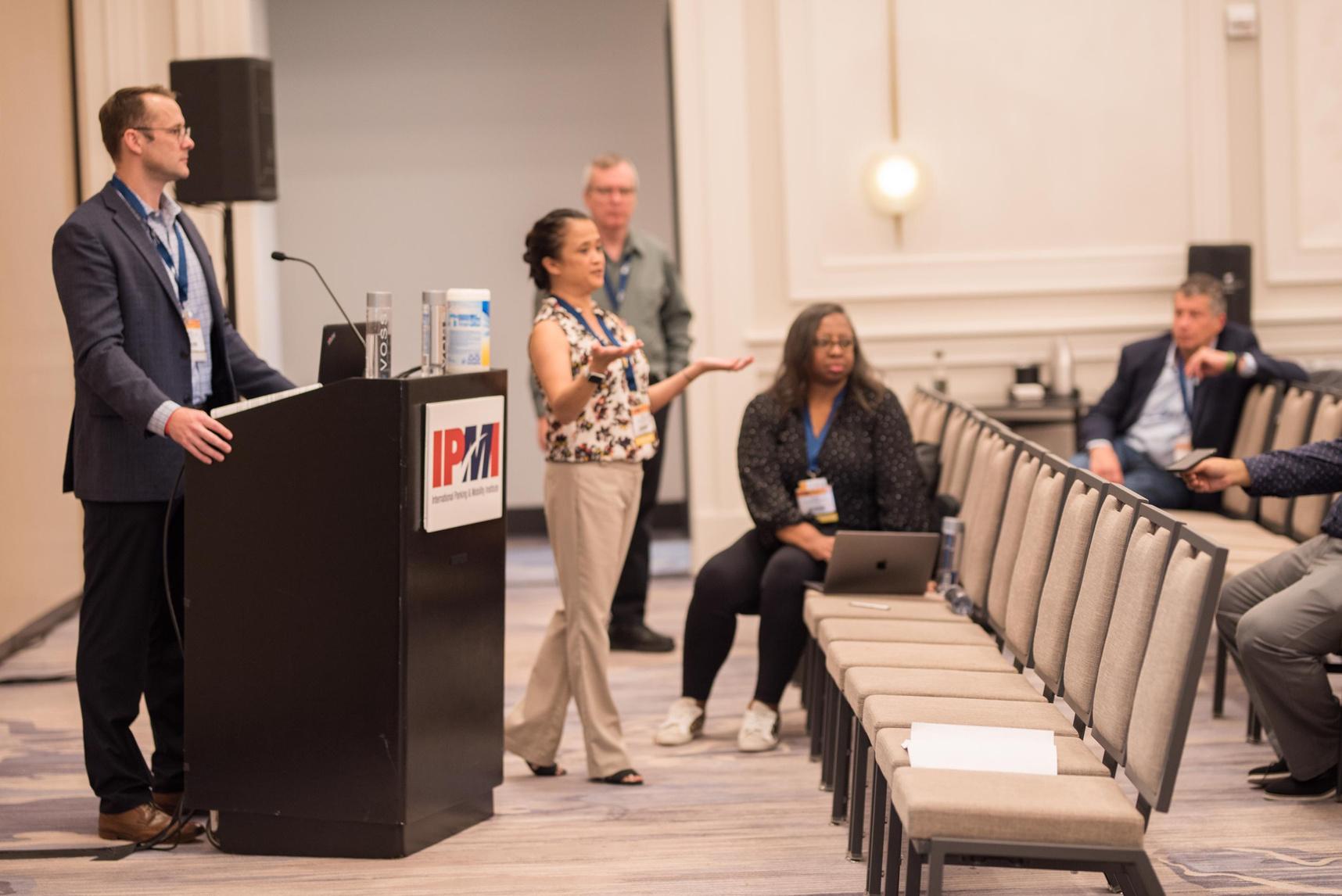

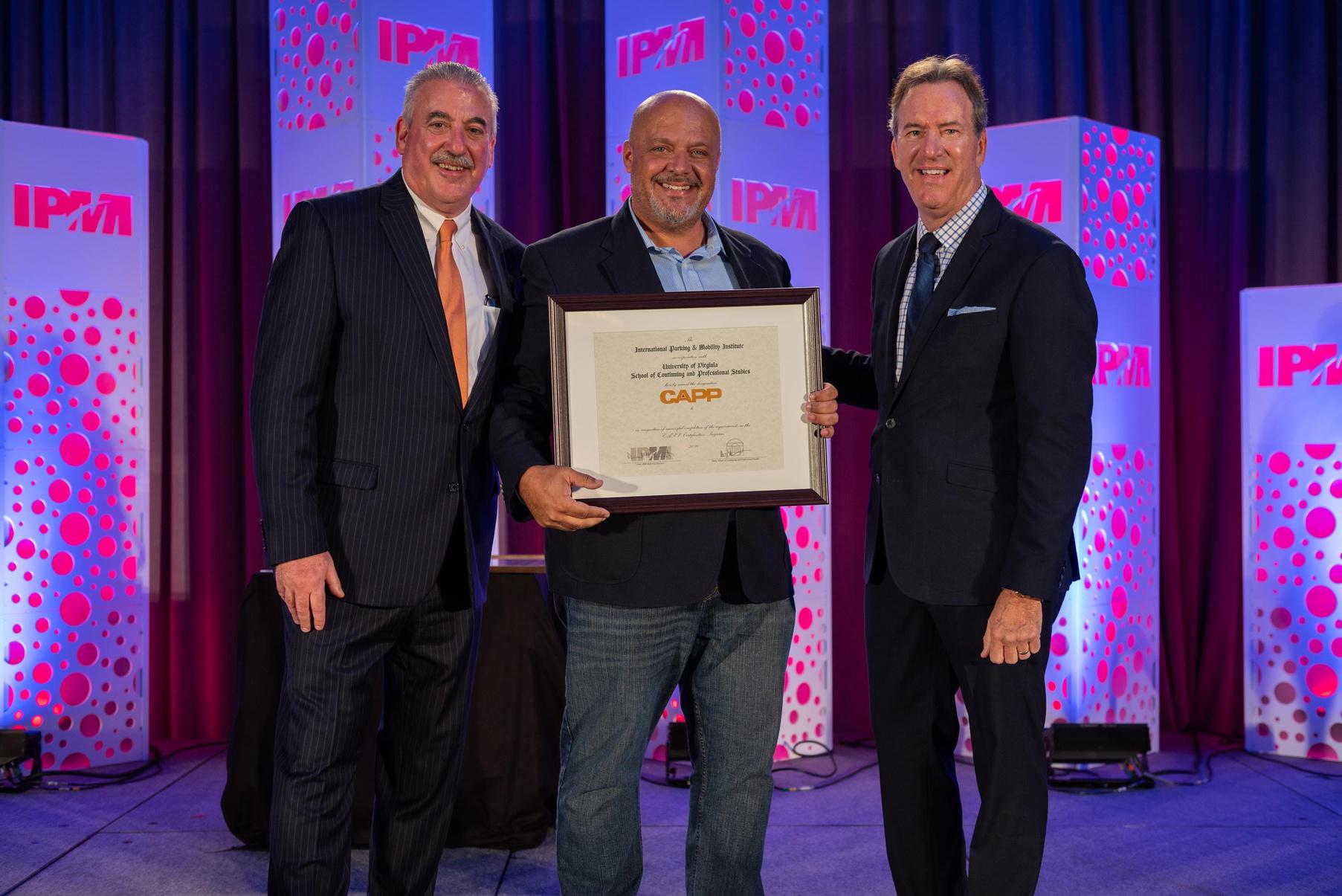
JANUARY 11
IPMI Webinar
Understanding Curb Management: Tackling Demand at the Curb
JANUARY 12
Free Member Chat CAPP
JANUARY 18
Free Virtual Shoptalk Shifting Sands: Industry Outlook and Future Trends
JANUARY 19
Free Member Chat New Members
FEBRUARY 2
Online, Instructor-Led Course Cybersecurity: Managing Risk and Securing Your Operating Environment
FEBRUARY 9
Free Member Chat Accredited Parking Organization (APO)
FEBRUARY 14
Free Virtual Frontline Training Frontline Shoptalk
FEBRUARY 22
A New Frontier and Perspective on Monthly Marketing, presented by TEZ Technology.
MARCH 2
Free Member Chat New Members
MARCH 8
IPMI Webinar
If You Build It, Will They Charge? Planning for Successful EV Charging
MARCH 15
Free Virtual Shoptalk Cities and Municipalities: Revenue Enhancement Strategies and How to Make it Happen in Your City
MARCH 21, 23, 28, & 30 Online, Instructor-Led Course Parksmart Advisor Training
APRIL 6
Free Member Chat Accredited Parking Organization (APO)
APRIL 11
Free Virtual Frontline Training Addressing the Perception & Image of Parking & Transportation Professionals
APRIL 25, 27
Online, Instructor-Led Course APO Site Reviewer Training
MAY 4
Free Member Chat CAPP
MAY 10
Free Virtual Shoptalk Planning for an EV Future: Avoiding Pitfalls and Planning Future Forward

MAY 17
IPMI Webinar
Delivering the Goods: Making Sense of Commercial Access in Commercial Areas
JUNE 1
Free Member Chat Conference & Expo First Timers Orientation
JUNE 6
Free Virtual Frontline Training Honing Your Personal Brand
JUNE 11–14
2023 IPMI Parking & Mobility Conference & Expo Fort Worth
JULY 11
Online, Instructor-Led Course Analysis & Applications of Technology
JULY 12
IPMI Webinar
What Affects the Cost of Building a Parking Space?
JULY 19
Free Virtual Shoptalk Turning Parking Data Into Valuable Insights
JULY 20
Free Member Chat New Members
AUGUST 15
Free Virtual Frontline Training The Benefits of Understanding the Parking Lifecycle
SEPTEMBER 7
Free Member Chat Awards
SEPTEMBER 13
IPMI Webinar
EV Readiness: Develop & Execute an Effective Plan in your Parking Operation
SEPTEMBER 19, 21, 26, 28
Online, Instructor-Led Course Parksmart Advisor Training
SEPTEMBER 20
Free Virtual Shoptalk University Shoptalk: Guiding Your Team to Serve Your Patrons
OCTOBER 5
Free Member Chat CAPP
OCTOBER 10
Free Virtual Frontline Training Implementing License Plate Recognition on Campus
OCTOBER 17
Online, Instructor-Led Course Accredited Parking Organization (APO) Site Reviewer Renewal Training
OCTOBER 19
Free Member Chat New Members
NOVEMBER 2
Free Member Chat APO
NOVEMBER 8
IPMI Webinar How Parking fits with Transportation: Path to Greater Mobility in Nashville
NOVEMBER 15
Free Virtual Shoptalk Airport Shoptalk: Operating Large-Scale Airport Operations
DECEMBER 12
Free Virtual Frontline Training Procurement—Best Practices & Lessons Learned

APRIL 10–13, 2023
Texas Parking & Transportation Association (TPTA) Conference & Tradeshow Plano, TX
APRIL 18–21, 2023
Mid–South Transportation and Parking Association (MSTPA) Annual Conference & Tradeshow Savannah, GA
MAY 3–5, 2023
Pennsylvania Parking Association Conference Lancaster, PA
SEPTEMBER 6–8
Pacific Intermountain Parking & Transportation Association (PIPTA) Annual Conference & Expo Seattle, WA
OCTOBER 23–25
Southwest Parking & Transportation Association (SWPTA) Annual Conference Las Vegas, NV
NOVEMBER 7–9, 2023
California Mobility and Parking Association (CMPA) Annual Conference & Tradeshow San Jose, CA